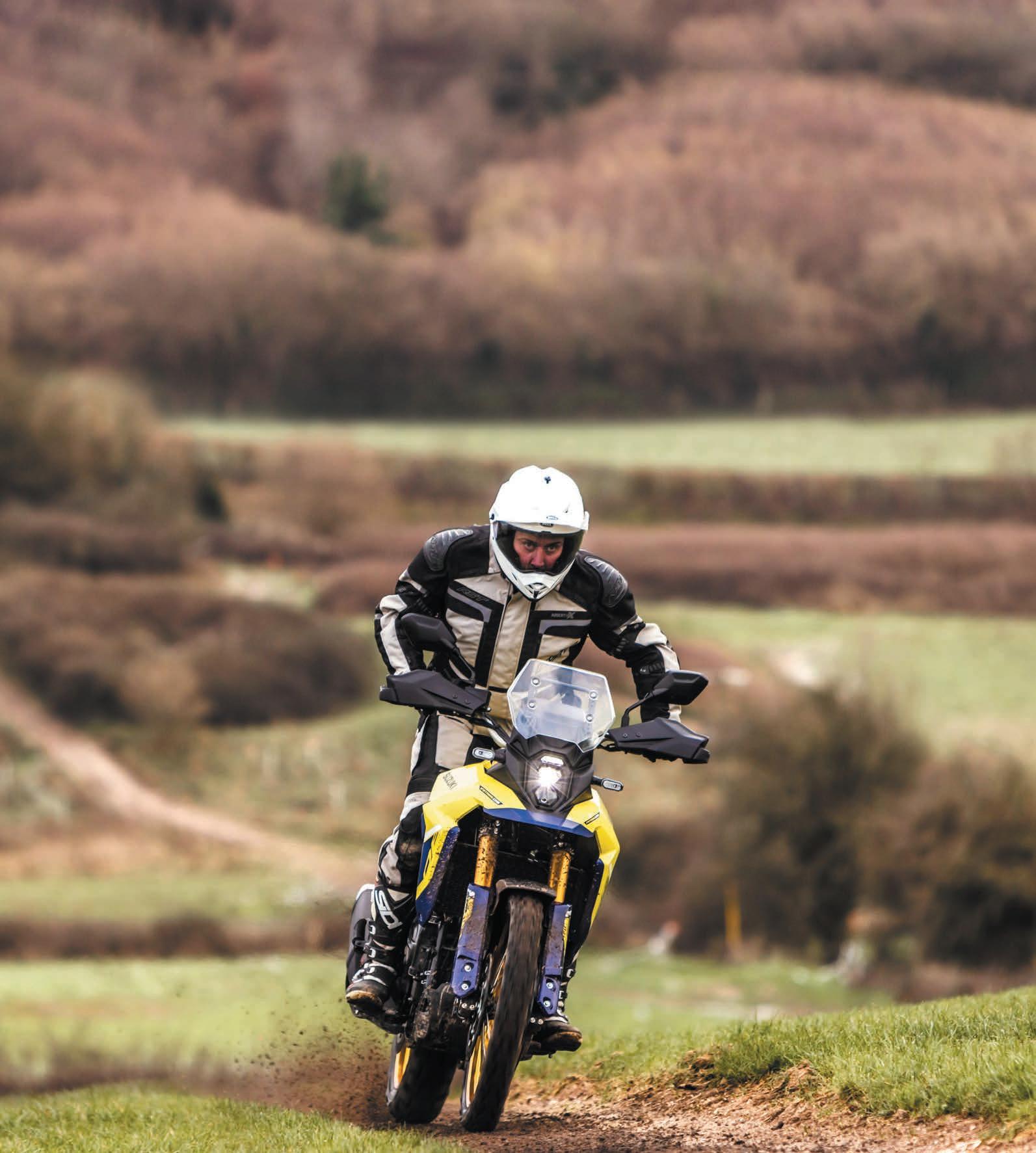Bringing




































Bringing











































£90,000 British-built electric monster








KING OF THE ROAD
EVERY DAY’S A SCHOOL DAY WITH RAPID TRAINING





GS BEATER



TARMAC AND TRAILS WITH THE TRIUMPH TIGER 1200

















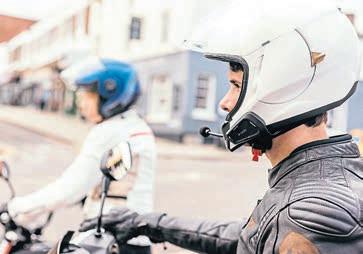



TALKIN’ TECH










✔ 117bhp

✔ 238lb-ft




✔ 271-mile range




✔ 40-minute recharge
























































It’s all go at MoreBikes HQ! This time of the year’s always manic; it’s new bike season and we’re all tearing around riding the latest machines and writing about them so you can make the best informed decision, if you’re thinking about buying a new ride in 2023. In the next couple of weeks I’m heading off to ride Suzuki’s updated V-Strom 1050 (including the big-wheeled DE in the dirt) and then I’m away on the launch of Honda’s reinvigorated Transalp – and that’s just me, never mind the rest of the team. Keep your


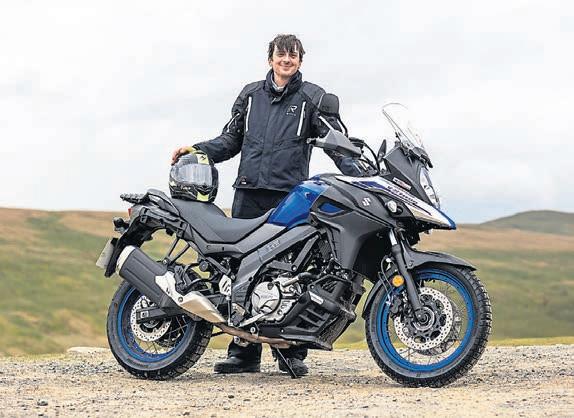

rmowbray@mortons.co.uk
eyes peeled for the full lowdown on both bikes (and plenty more) in the coming issues. But between all that, I’m lining up plans for the coming months and generally thinking about what brilliant biking content to bring you over the next year. We’ve got lots of cool ideas and plenty to keep you inspired and entertained, but we love hearing your thoughts about what to get our teeth stuck into next. Do you want workshop features?
Project bikes? Used bike tests?



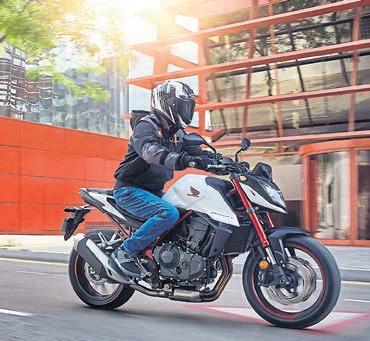
Track guides? More scooters? An
off-road section? This paper’s a reflection of you lovely lot and we want to make sure we’re getting it right and bringing you a bangon-the-money mix of top-quality motorcycle content every time. Thoughts on a postcard to the address below (or via email direct to me). I might even send a funky MoreBikes t-shirt your way for your trouble.
’Til next time...

The biggest news for the tweaked A2-licence friendly KTM is that it’s getting spoked wheels for the first time. That’s a big deal for those serious about hitting the trails. Getting into specifics, they’re black-anodized ones, 19 inches up front and 17 inches at the rear. That’ll do nicely.
Elsewhere, the 390 Adventure is running an unchanged 373cc single-cylinder engine, which kicks out 44 horsepower and 37Nm of torque. It’s a great motor, freerevving and flexible with enough poke to hit 90mph, so it’s no surprise KTM’s left it well alone.

The outgoing model’s steel trellis frame has also been carried over for 2023, in addition to the WP Apex suspension (which offer rebound, compression and preload adjustment). The brakes come from Brembo’s Bybre brand, with a 320mm front disc with four-piston calliper and a 230mm disc at the rear.
There’s plenty of technology as standard, too, including a ride-by-wire throttle; traction control; cornering ABS; an ‘Offroad’ riding mode (that allows more rear wheel slip and reduces ABS intervention); and a five-inch TFT display. Add to that a spacious enough seat for two-up travel and a height adjustable windscreen, and the 390 Adventure starts to look like a serious proposition for riders looking to explore in comfort.
Priced at £6999, it’s no cheap bit of kit, but when you consider the quality of finish, level of equipment as standard, and the fact it’s a tried and tested platform, you can't deny that money would be well spent.
Leaked snaps confirm that there’s an even more adventure-focused version of Husqvarna’s Norden 901 on the way soon

There’s a trick, more off-road ready version of the Norden 901 in the works – and a shot of the finished bike at a recent dealer conference confirms it’s nearly ready to go.
It’s not a shocking revelation.
Husqvarna’s parent company KTM has a long history of realising slightly more sophisticated versions of its standard bikes, and the Norden 901 ‘Expedition’ follows that same formula. Launched last year, the
‘standard’ Norden 901 was a big deal for Husqvarna. It was the firm’s first attempt to make waves in the ever-competitive big adventure bike market. And it did pretty well, with solid reports from the launch ride and beyond.

That’s surely why the factory is upping the ante with a new, upgraded version of the bike. It’s expected to remain largely unchanged mechanically, but will get some additional goodies and a better level of standard equipment.
If you’re into adventure bikes and you know your dual-sport history, then you’ll likely be as excited as we are about the launch of the new Honda Transalp.
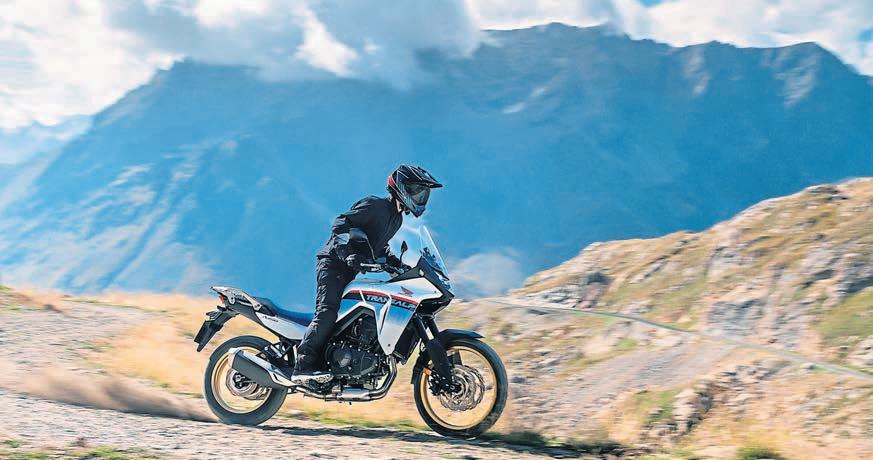
We’ve already given you the full lowdown on the bike, going into detail about its Hornetderived engine and more, but ever since its big reveal at EICMA show in Milan there’s been one question on everyone’s lips. What’s it going to cost? Thankfully, ahead of the arrival of the bike in dealers, Honda’s laid out exactly what the new bike will cost to buy (including how much it’ll set you back on a PCP deal).
The headline news is that if you want to get your hands on one outright, you’re going to have to splash out £9499 including on-the-road charges. If you’re think about financing, then you’ll have to lay down a £2472 deposit, which is followed by monthly
payments of £99 per month (before a final payment of just over £5000 to make the bike yours at the end of the term). To sweeten the deal, Honda’s offering the first 150 punters a Datatool STEALTH GPS Tracker with 12 months of subscription.
So now we know what it’s going to cost, we can take a look at how it compares to some extremely tough competition. The answer: pretty favourably.
It undercuts Aprilia’s Tuareg and Yamaha’s Ténéré 700 – and it’s even cheaper than Suzuki’s newlyreleased V-Strom 800DE (to the tune of £800).
Of course, price isn’t everything, and the Transalp has some seriously big shoes to fill if it’s going to earn a place at the top of the pile of middleweight adventure bikes. Thankfully, we won’t have to wait too much longer to find out, as we’re going to be one of the first people to ride one next month.
Although there’s been no official word from Husky, rumours suggest the new Norden 901 Expedition will make its ‘proper’ debut soon.
Finally we know what Honda’s XL750 Transalp is going to cost when it lands in the UK
The Austrian factory has been rolling out a range of updates to its extensive adventure range – and the latest to get a look in is its ‘entry-level’ 390 Adventure.
We’ve been talking about this bike for some time. Rumours have been swirling, registration documents have been leaked, and Kawasaki even teased us with some photos – but now we’ve got the full lowdown on the trio of newly-designed sportbikes.















The big news is that the Kawasaki ZX-4R, SE and RR get a brand spanking new 399cc, watercooled four-cylinder motor which kicks out a very respectable 76.4 horsepower (up to 79.1 horsepower when the Ram Air system is pressurised). Even better is the redline – a very generous 15,000rpm. The chassis makes use of the same frame as Kawasaki’s much-admired Asian-only ZX-25R. It’s a steel trellis chassis number which Kawasaki describes as ‘high tensile’. Elsewhere, there’re Showa SFF-BP front forks and horizontal backlink rear suspension on the standard model, with additional preload adjustment up front for the SE and ZX-4RR. The RR also gets the same Showa BFRC-lite rear shock as Kawasaki’s ZX-10R. That’s pretty cool.
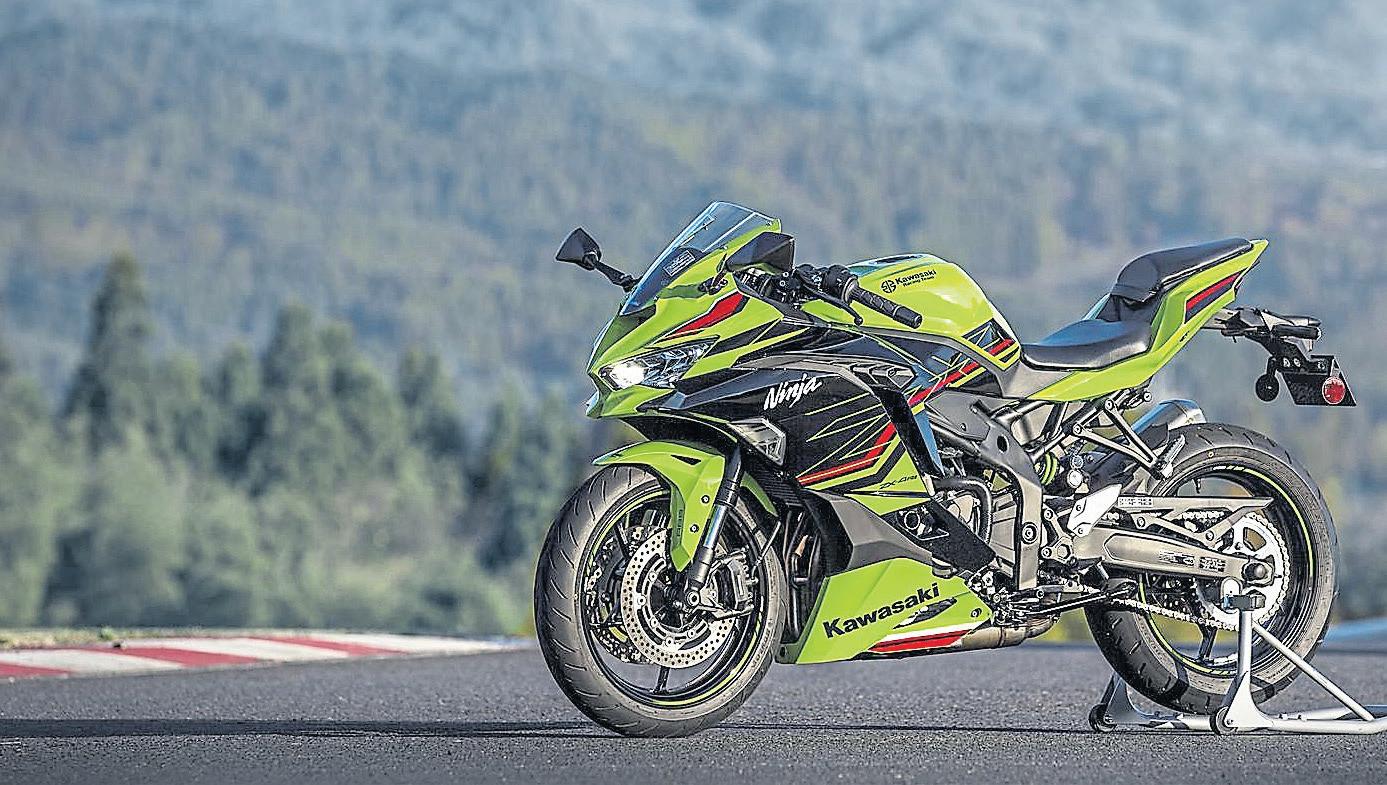


Elsewhere, there’re radial-mounted callipers squeezing dual 290mm front brake discs and a single 220mm disc at the rear; LED lighting; KTRC traction control and power modes (Sport, Road, Rain, and Rider, the latter being a custom map); a two-way quickshifter on the SE and RR models; and a 4.3-inch LCD colour display.

















No news yet on pricing, but with an autumn release on the cards, hopefully we won’t have to wait too much longer to find out.
























There’s a new range of hot 400s on the way – and they’re a big departure from the ‘old’ Ninja 400













The manufacturer has plans for eight electric vehicles by 2030 – and is throwing investment at e-fuel technology, too.





The news that Suzuki’s getting serious about green technology should come as no surprise. The Japanese firm has been gradually revealing its plans over the last few months, but with the unveiling of its new ‘growth strategy’ we’ve finally got a few more details.

Like we said, no surprises here – particularly when you consider that Suzuki’s announcement that it was leaving the MotoGP paddock in 2022 was partly due to it focusing more of its resources on developing alternative power solutions to replace its traditional internal combustion engines.The big news is that Suzuki has now confirmed plans to have eight electric powered two-wheelers on the market by 2030, with the first one set to be introduced in 2024. Although details are still a little hazy, the firm has made it clear that its initial battery-powered machine will sit in the ‘small-to-mid-capacity’ range and will be likely aimed at commuters.
That’s not all. Suzuki’s now made it clear that it’s only going to looking at electric for some of its bikes and scooters. A press release from the firm confirms that ‘for large motorcycles for leisure purposes, Suzuki is considering adopting carbon neutral fuels’.
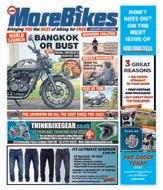










Maybe leaving MotoGP wasn’t such a good idea after all, when you consider that the top flight of racing has just announced that it’ll begin using part-non-fossil fuels from 2024, and non-fossil fuel from 2027. That said, Suzuki’s a big player with plenty of resources, and while it’s been looking into electric for its ‘smaller’ mobility machines, outboard motors and cars (with its first battery-powered four-wheeler also on the way in 2024), it’s already hard at work exploring CNG, biogas and ethanol-mixed fuels as alternatives to fossil fuels.










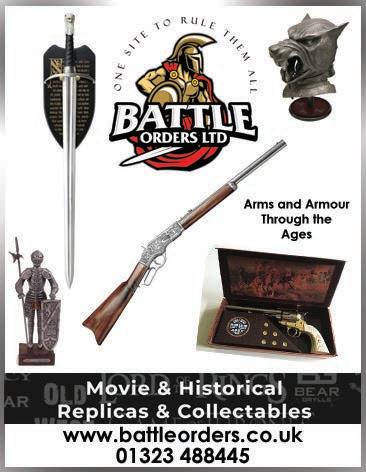




February 25-26 / The Royal Bath And West Showground / www.bristolclassicbikeshow.com



If you’re into your racing, the names Haslam, Nation and Crighton will mean a lot. The three of them are synonymous with a golden age of racing, and they’re all set to appear at the upcoming Bristol Classic Motorcycle Show.
Taking place across February 25-26 at the Royal Bath and West Showground in Shepton Mallet, the annual classic bike extravaganza offers the chance to hear
three legends of the game talking about their glory days. The show’s also the perfect opportunity to stock up on classic parts, spares, accessories and riding gear for the season ahead, while checking out the hundreds of pristine bikes on display (from both clubs and private entries).
There’s little wonder this is such a popular date on the motorcycling event calendar, attended by more than 16,000 like-minded
























enthusiasts every year – if old bikes are your thing, there’s no better place to be this February.
■ Discounted advance tickets are now on sale for the show, with a one-day adult pass costing just £14.50. Tickets will also be available on the gate at £17, while youngsters aged 15 and under get free admission. There’s also free parking available on site.



We’ve teamed up with our friends at Pama to offer MoreBikes readers the chance to WIN a Cardo System FREECOM 2X Duo worth £365!
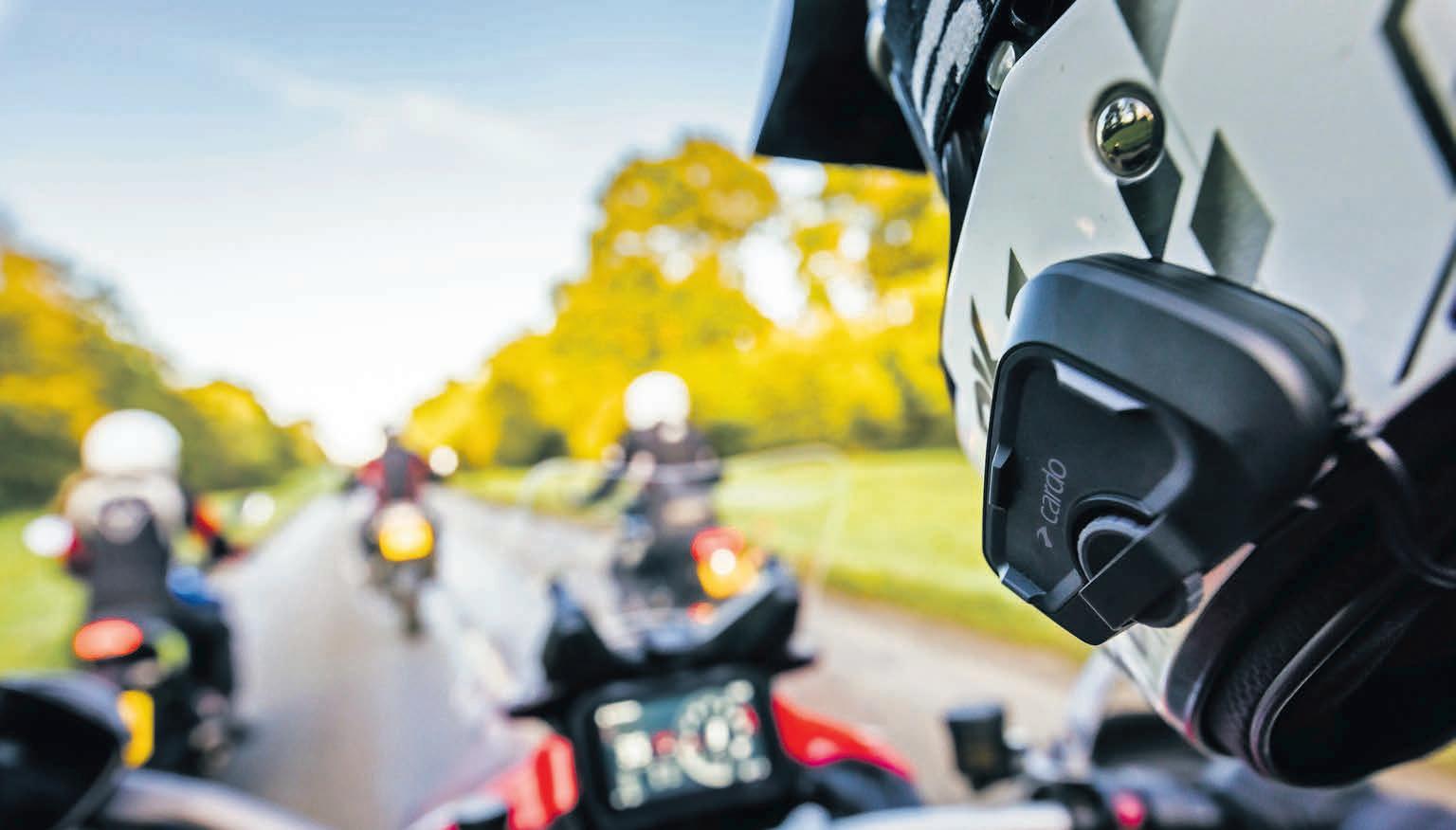
A new standard for Bluetooth communicators, the FREECOM 2X boasts Live Intercom, an auto-reconnecting Bluetooth connection for two riders, with high quality ‘Sound by JBL’. The waterproof unit charges via USB-C and fast charging means a 20-minute charge offers two hours of ride time – fully charged provides 13 hours of battery life. The FREECOM 2X features over-the-air software updates, an analogue jog-dial, and has a range of up to half-a-mile between users. For more information about the product, visit www. pama.com/cardo
1. Head to www.morebikes.co.uk

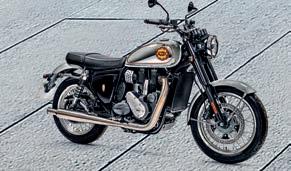

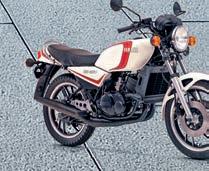
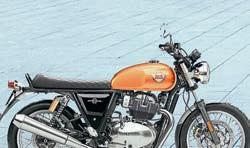







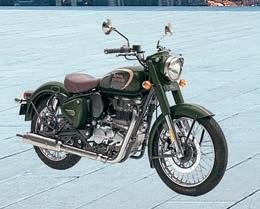

2. Visit the competition section of the website










3. Fill in the form for your chance to win!
Competition closes at midnight on March 17, 2023. There are no cash alternatives available. The winner will be the first name drawn at random. Terms and conditions apply. To view the privacy policy of MMG Ltd (publisher of MoreBikes) please visit www.mortons.co.uk/privacy




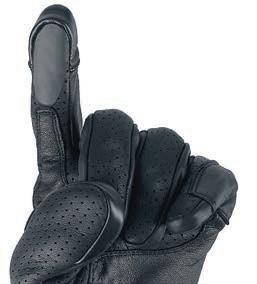
£499.99 / www.alpinestars.com
The latest crash protection airbag from Alpinestars is a universal-fit vest, the Tech-Air 3. Aimed at commuting, touring and light off-roading, it’s an all-in-one integrated crash protector that fits over or under your kit and doesn’t need fitting to another jacket or suit. It’s operated via an LED control panel, which has a vibrating haptic notification set up, and is designed to protect your chest and back areas from impacts. It has a six-way sensor package, with three gyros and three accelerometers, and uses the firm’s latest smart crash detection algorithm. Available in sizes XS-4XL, and a Stella woman’s fitment, in high-viz yellow or subtle grey.


£14.99 (pack of six) / www.oxfordproducts.com
Oxford Smart Fingers Genius, this – if you have a favourite pair of gloves that don’t work with touchscreens, simply fit some of these self-adhesive fingertips from Oxford. Instant upgrade for all the comfy old gloves in your kit cupboard. We’re getting some lush old RS Taichi ones out now.

£929 (standard) £1299 (Drudi Nexus edition) / www.forcitehelmets.com

£99.99 / www.motojean.com

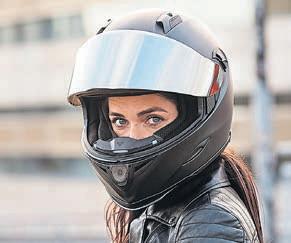
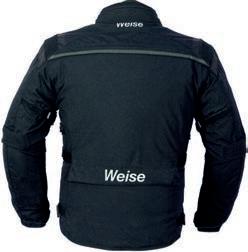
Good-quality protective riding jeans at a decent price is the promise from start-up family firm Motojean, which launched at the start of 2022. These single-layer denim jeans are UKCA and CE-approved to AA, with CE Level Two hip and knee protectors included. There’s a choice of black and blue jeans, in skinny, slim, or straight cut.

Australian
starting with its MK1S lid. It’s a lightweight (1500g) full-face ECE22.05 and DOT-approved helmet with a carbon fibre outer shell and a series of useful electronics already built in. There’s a chin-mount 1080P action camera, Harman-Kardon speakers with dual microphones, and a peripheral LED display system that sends signals to the rider about navigation, speed traps, mobile cameras and traffic alerts. It’s controlled via a smartphone app and a supplied handlebar controller, charges via USB-C, and links with Bluetooth 5.0. The lid’s battery lasts about seven hours and charges in 90 minutes. Forcite has also signed a deal with Aldo Drudi for some subtle new paint designs going forward.

£149.99
British lock maker Litelok has been working on highsecurity bike locks for a few years now, and this is its latest piece of kit. The X1 Moto U-lock claims to offer ‘unparalleled’ resistance to angle grinder attack, thanks to a composite steel/ceramic construction with layers of super-hard ‘Barronium’ material (named after the firm’s founder, Professor Neil Barron), bonded with high grade steel. The composite material gives angle grinders a torrid time, wearing out discs and batteries faster than normal steel locks. It’s Sold Secure Diamond rated, so has passed some pretty tough tests, and the top-spec X3 version uses an ABLOY Sentry lock cylinder. Made in the UK, it also features a soft rubber outer sleeve to protect your bike and weighs in at 1.7-1.9kg.
£21.22
Winter’s here, and the number one cause of breakdowns now will be tired batteries giving up the ghost. Get an early warning of any problems with one of these, an Optimate inline battery monitor, now redesigned to work with lithium, sealed AGM, gel, and normal lead-acid batteries. It fits into a standard SAE Optimate charging connector and can be left in place on the bike. It displays the battery health at a glance and also shows that the bike is charging properly when the engine is running.

We love a bit of trivia here at MoreBikes. No matter whether we’re at a pub quiz with a beer in one hand and a pencil in the other, or being questioned by our mates when we’re stood around at a bike night, there’s something about knowing the answer to an unexpected question that
gives us a nice fuzzy feeling inside. And if we don’t know, then there’s a good chance we might learn something. That’s cool, too. That’s why we’ve decided to introduce a regular quiz section sponsored by our good pals at Fowlers (who’ll be supplying the prizes).
We’ll be asking you questions about all manner of two-wheeled stuff,
pushing your memories to the limit and asking you to dig deep to try and remember all manner of strange stuff from right across the world of bikes. It’s a chance for you to show off your infinite two-wheeled wisdom and be in with a chance of winning some cool prizes, or if not, learn a few things that you might not know.
£139.Worth99
In which year did Honda first launch its Hornet?
By 2018, how many Honda Cubs had rolled off the production line?
2 5
How many horses does BMW claim its new M 1000 R make?
7
What’s the price of the groundbreaking ARC Vector?
Looking for a comfortable, casual jacket that’ll look as good off the bike as on it, which provides all the protection you’d need to keep you safe on the road? Then how about this armoured hoodie from Weise. Fitted with CE-armour on the shoulders, elbows and back, and a full 250-gram Aramid fibre lining, the AA-rated jacket packs plenty of protective punch and looks good while doing it. If you want to know more, then visit: www.weiseclothing.com

Which bike shares the same bottom end as Triumph’s Tiger 1200?
8 3 9
What’s the name of the funky absorption tech used by Bell?
6 1 10 4
Which racer helped iron out some of the issues with Yamaha’s XS650?
In which year did Giacomo Agostini sign on the dotted line for Yamaha?
How many electric bikes is Suzuki aiming to have on its books by 2030?
To be in with a chance of winning, all you’ve got to do is jot the answers down on the entry form, and send it in using the details provided. We’ll then pick the winner from an upturned helmet crammed with correct answers and that person will be sent an AArated Weise hoodie packed with plenty of protective punch. It’s that simple. So, what are you waiting for? Get cracking for the chance to win. Good luck!
It’s time to get out your pens and pencils and put your grey matter to the test.
We love to see what you lot are riding – and we know the rest of you like it, too. It’s just like pottering around a bike night and checking out what’s been brought out for a ride. Now we’ve decided to bring the bike night to you, asking readers to send us photos of their pride and joy for the world to see. Here’re some of our top picks from the last month.

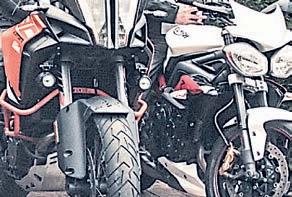
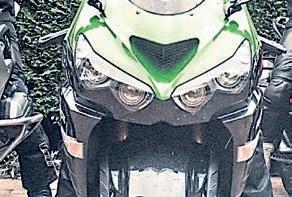



We’re seriously envious of Chris Carbaugh’s collection of British icons.
Long bagged this ex-demo Suzuki GSX-S1000GT back in October. “Who says you can’t ride in winter and winter isn’t new bike time? Sometimes there’s a bargain to be had.” Here it is at Oliver’s Mount in Scarborough.
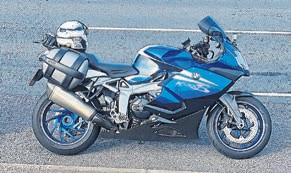


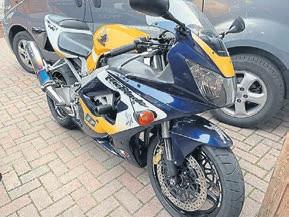


A Thruxton at Thruxton. It’d have been rude not to, right, Rick O’Shea?
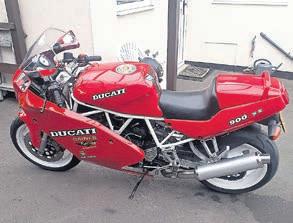




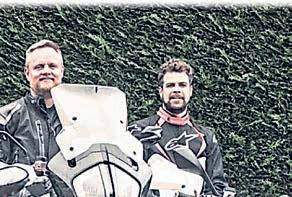


We love the look of Chris
Royal Enfield Interceptor 650. He’s had if for three-and-a-half years, commuting 60 miles a day. Issues with electrical gremlins, but it’s held up pretty well to corrosion with a bit of TLC.

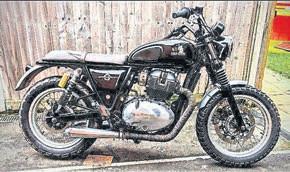
at High
in Upper
a



en route to Alston then Penrith. An epic road. He’s had it a couple of years now and has done plenty with it, including a Jamie Whitham track training day at Croft (where it was in its element, totally at home on the track) and a proper trek down to the Cadwell Park BSB meeting last summer.
 Andew Moore’s Aprilia RSV Mille. He’s had this beauty from new.
Neil Alger Yamaha’s FZR1000 Genesis looking resplendent with his wife’s Yamaha Tracer in tow!
Russell’s scrambler-spec
Graham Gatenby’s pride and joy,
Ducati 1299 Panigale, parked up
Force
Teesdale,
Andrew Bolas’ gorgeous Honda Fireblade looks ready for the track.
A pair of stunning Ducati 900SS bikes from Jason Newell and John Coombes. What we’d give to have one of these in our garage.
Simon
Andew Moore’s Aprilia RSV Mille. He’s had this beauty from new.
Neil Alger Yamaha’s FZR1000 Genesis looking resplendent with his wife’s Yamaha Tracer in tow!
Russell’s scrambler-spec
Graham Gatenby’s pride and joy,
Ducati 1299 Panigale, parked up
Force
Teesdale,
Andrew Bolas’ gorgeous Honda Fireblade looks ready for the track.
A pair of stunning Ducati 900SS bikes from Jason Newell and John Coombes. What we’d give to have one of these in our garage.
Simon
Chat with your mates, listen to music or follow your satnav instructions –you can do it all. But what should you be looking for?
Comms, intercom device, Bluetooth headset – no matter what you call it, looking to buy one can sometimes leave you in a jargon-filled rabbit hole. What is ‘mesh’? Is a 100m range enough? Do you need an engineering degree and a toolkit to fit it into your helmet? We’ve put together a handy buying guide in case you’re looking to buy a communications system to become your riding companion…

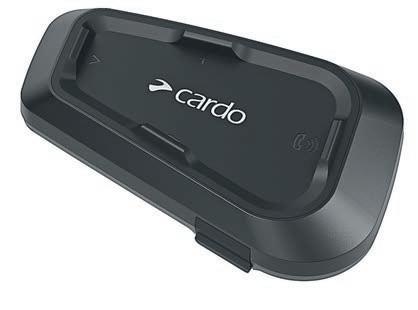
£339 (single) or £609 (duo pack) / www.cardosystems.com or www.pama.com/cardo
Fiddling with buttons on the go isn’t advisable – or terribly safe. Look for devices that are easy to use, or even better, take voice commands, which means you can just speak to activate common functions, and you don’t have to take your hands off the bars at all. It makes using comms effortless, and it makes you feel like Knight Rider with Kitt… Priceless!
For your chance to win a Cardo Systems Packtalk Edge, check out the competition of page 9
Lots of the systems on the market have a specification sheet as long as your last ride-out, but what do you actually want it to do?
Sometimes it’s easy to be wowed by the latest tech and think that you need an ‘all-singing, alldancing’ unit, when actually you could save your cash and choose a unit that fulfills all your needs with less tech.
There’s a lot to plan and worry about when heading off on a trip –and a lot of things to charge. Look for options with a long battery life and quick charging (or the option to charge on the go).
This point goes back to asking yourself what you actually want the unit to do. Sound is the most important factor for all of the intercoms functions, so it’s a feature that you want to be decent! In addition to making sure the speakers are exactly in the right position, check the speaker quality of the system.
Less than £100
Some of us have a second helmet; is there an option to purchase another fitment kit perhaps so you can easily swap the unit from one to another? Can you upgrade the speakers if you wanted to? Comms devices can be costly investments, so it’s likely that the Velcro and fitment may start looking a bit frayed after a few years. Can you buy a ‘refreshment kit’ to give it all a new lease of life?
Most intercoms are compatible with most helmets, but there are some which fit better than others. Some need tools and others don’t. How easy are the instructions to follow? Ask in your dealership how easy they are to fit. They may even be able to help you if you ask nicely…
If you’re planning on using the unit with your pillion then range may not be too important. However, if you’re planning a tour and there is a large group of you, then it is. It’s also worth thinking about what happens when you do go out of range with the units... will you have to stop and reconnect or will it do it automatically? Look for technology such as mesh connectivity or auto-reconnecting Bluetooth if this is something you’re after.
Whether you ride all-year round or just in the summer, there’s still a chance you could get caught in a downpour. You don’t want your new £400 device to be ruined the first time you ride in the rain…
If your mates have already got a comms device, ask the dealer whether the model you want to buy can connect with other brands and how easy it is. The Open Bluetooth Intercom partnership between Cardo, Midland and UClear is a great step forward, with them all working together to solve common connectivity issues between brands. Also, check that you can connect your phone, satnav and/or bike infotainment system/TFT screen easily.
These devices are packed full of tech, but how long will it last and be supported? How easily can you get software updates for the unit? Look for features like over-the-air updates to cut down on cables. It’s worth checking out what warranty is offered, too…
£87 (single) or £165 (duo pack) / www.cardosystems.com or www.pama.com/cardo

The Spirit Bluetooth intercom unit has a range of 400m/0.25 miles, so is designed for those wanting to chat with their pillion or one other rider close by. It’s waterproof, has over-the-air updates, and universal connectivity with other Bluetooth devices (and brands).

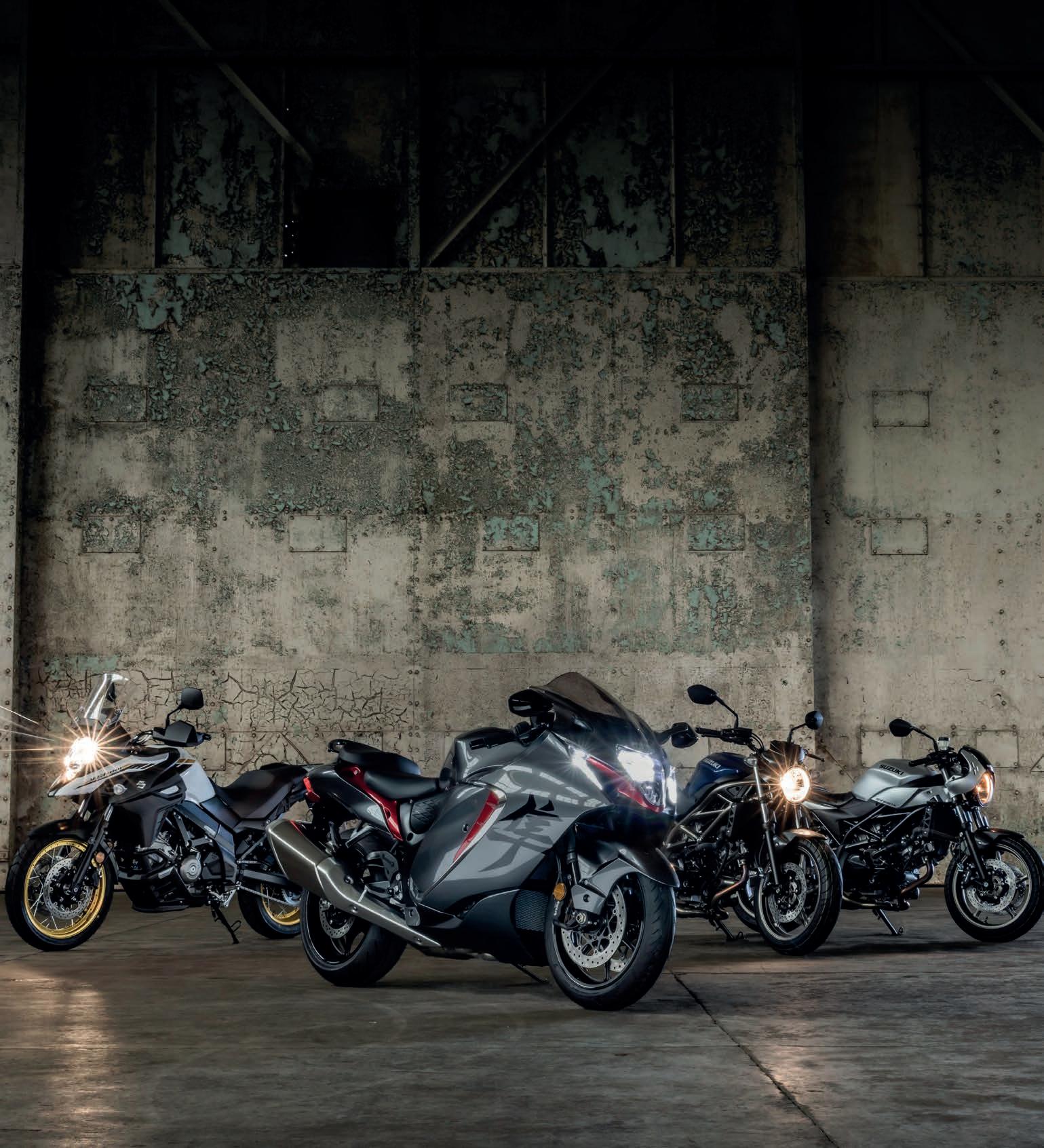


The Hornet is back. But Honda’s completely reinvented it for the 21st century. Here’s what you need to know about the hotly anticipated middleweight.
Want to get the full lowdown on the new Hornet from big H? Grab yourself a copy of MSL and read an in-depth review from new gaffer and naked bike nut Dave Manning.
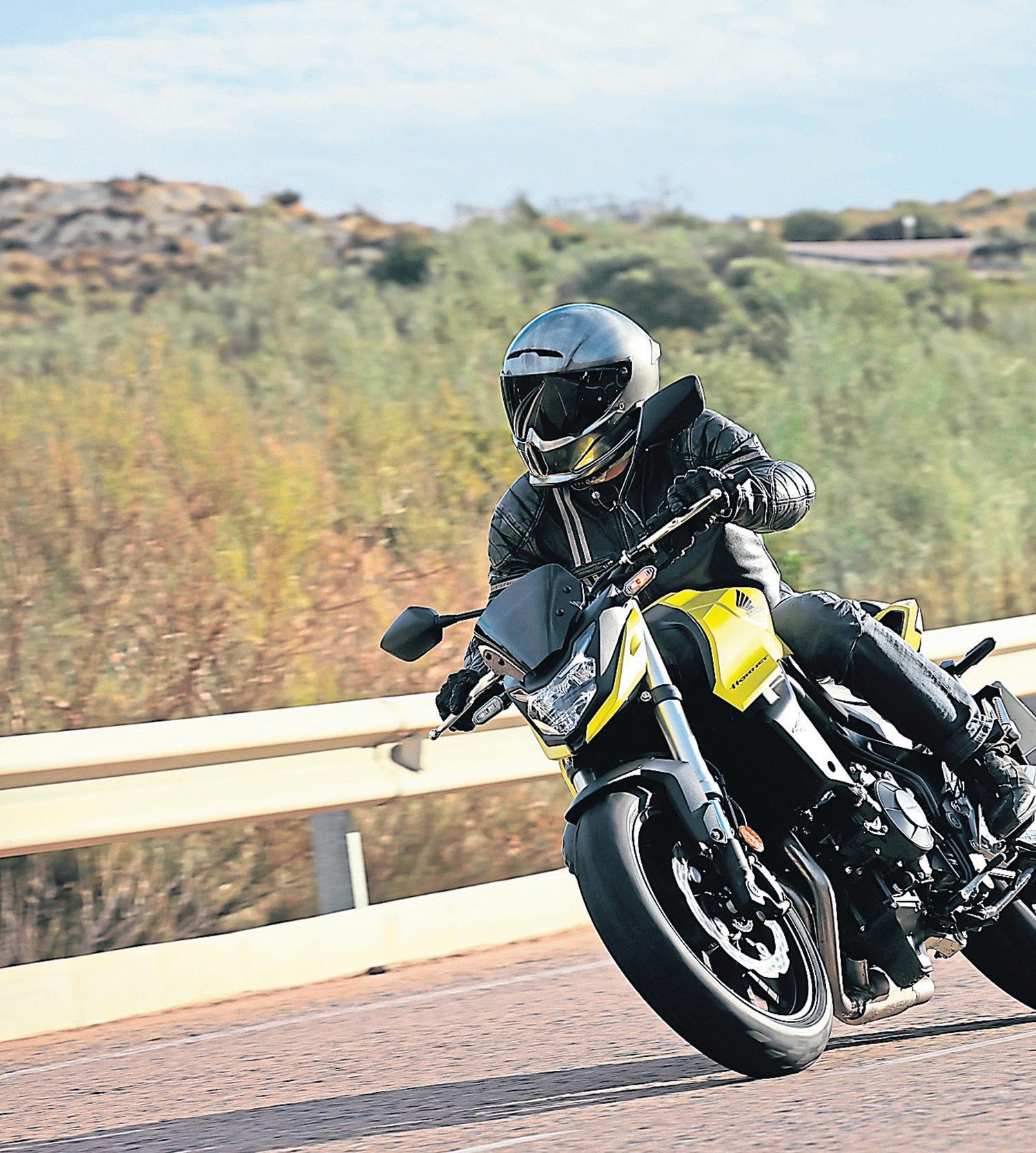
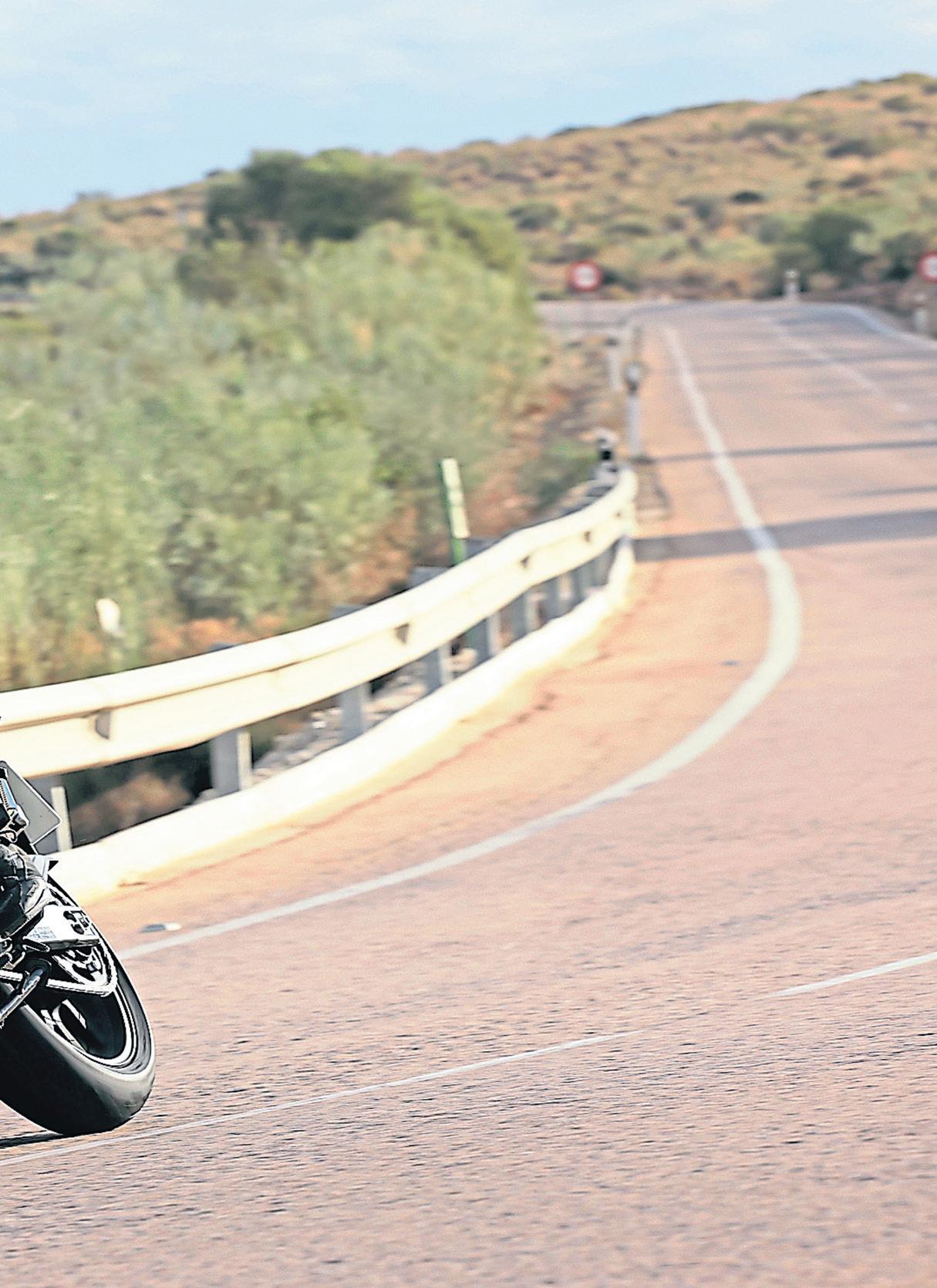
When Honda first launched the Hornet way back in 1996 – as a four-cylinder machine of just 250cc capacity – it was a departure from the normal Japanese domestic market styling of small-capacity machinery, being neither sports bike nor retro machine, and with its 180-section rear tyre was almost a caricature of what a naked bike should look like.
Thanks to the positive feedback from the 250 Hornet, it wasn’t long before Honda released a 600 version, using an older CBR600 powerplant, and then a 900 which, in turn, used a detuned FireBlade engine. But while these bikes were bigger, more powerful and higher spec’d, the payback was that the styling became less aggressive and more mainstream.
So, when the factory announced that it would be bringing in a new Hornet of a 750cc capacity, there were some confused thoughts about exactly what engine it would use? After all, the Hornet always used an engine that had been developed for an earlier bike, and what in the recent range was of a ¾-litre capacity?
Simply put, Honda has reinvented the Hornet, using a brand-new, twincylinder powerplant of 755cc capacity.
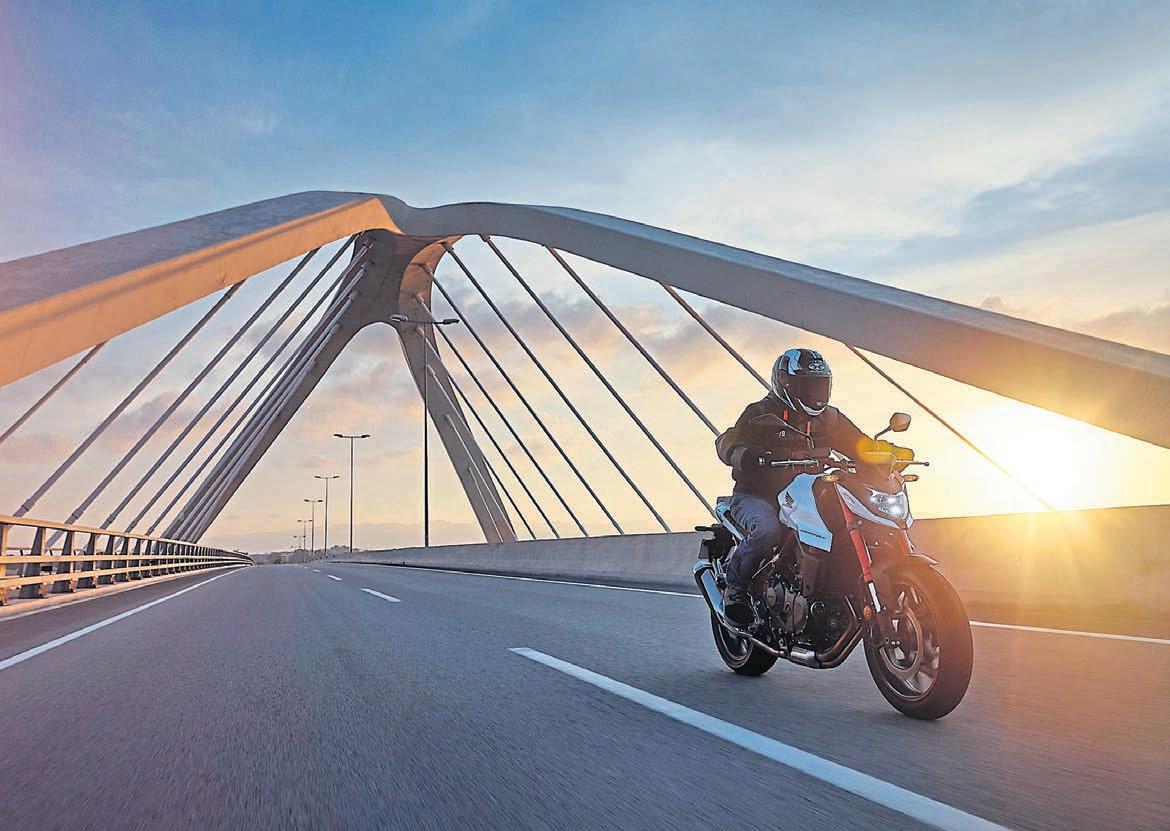
As is common with 21st Century parallel twins, the crank configuration is set at 270°, giving a power delivery (and sound) closer to that of a 90° vee twin, but Honda hasn’t simply gone down the same road as other manufacturers as the new motor has made some significant steps away from convention, including a very over-square configuration of 87mm bore and 63.5mm stroke.
Regardless of engine design, what really matters is how a bike rides. And the new Hornet is pretty damned impressive, it has to be said.
Although I was surprised at the fact that the new 750 has only got a 160-section rear tyre, which has been justified by Honda as allowing a greater agility and giving ‘kibi kibi’, a Japanese term for flickability. Th
Surprisingly loud for a production Honda, and surprisingly characterful, too, resulting from some inspirational and focused engineering.
The design of the induction channels has been focused on creating a vortex, speeding up the inlet flow and swirling into the combustion chamber to help combustion over the wide piston area.
Rather than rehash an inline four powerplant from a previous production model, the new Hornet has a brand-new ‘uni-cam’ 755cc parallel twin.

Holding 15.2 litres, the tank should, with the fuel consumption that Honda claims, be good for a very reasonable 210 miles-plus range.
The 5in TFT dash can connect to your device to allow interaction with navigation, music and calls.

Who would have predicted that the new-for-23 Hornet would be the one that had the narrowest rear wheel in the model’s history?
The Honda will arrive in your local dealer with either Dunlop Roadsport 2 or Michelin Road 5 tyres, although you may not actually have the option and it could depend entirely on the availability of each type.
also aided by the fact that the new 750 has a short wheelbase of just 1420mm (although I did notice that all of the bikes on the launch had the chain adjusters very close to the maximum), and quite a steep rake and short trail for a naked bike, too (of 25° and 99mm respectively).
Yet, despite the figures suggesting a bike that might err on the side of instability, not only was the Hornet really easy to fling from side to side through the entertaining switchback bends west of Mojacar in
southern Spain, but also there was never a shake of the head or a flap of the handlebars when running over ripples, divots or white lines when leant right over.
The suspension feels reasonable, certainly for the price point at which the Hornet sits, although it’s fairly clear that the forks and rear shock aren’t of a standard that might be fitted to a more expensive machine. The brakes are also of a standard that fits the price, in that they are great, but not of an equal to bikes higher
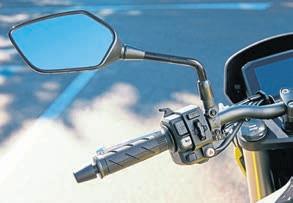
up the range. My only complaint was that the non-lean sensitive ABS kicked in a little too early, although that was, to be fair, only through a little experimentation to find out how soon it did operate, and for most road users in everyday use it would never intrude at any point.
Some might also be questioning the choice of colour schemes, especially for the matt finish Goldfinch Yellow, which in some lights does look a little sun-faded… But I must stress that that is only in some lighting conditions, and it really does look a heap better when in bright sunshine (and it does match the colour of my eyes…). The other schemes – Graphite Black, Pearl Glare White and matt Iridium Gray Metallic – will probably prove more popular in the UK, with potential British purchasers being a little more conservative in their choices, but it will be very interesting to see how it fares with sales, especially with the new Suzuki GSX-8 coming soon.
Honda Hornet 750

Price: £6999
Engine: 755cc, parallel twin, 270° crank, single overhead cam, water-cooling, 8 valves
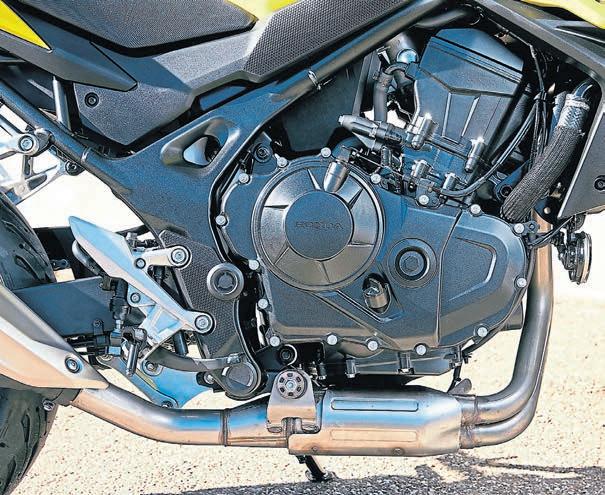
Power: 91bhp (67.5kW) @ 9,500rpm
Torque: 55lb-ft (75Nm) @ 7,250rpm
Frame: Steel diamond
Wheelbase: 1420mm
Brakes: 296mm discs, 4 piston radial mount Nissin callipers (F), 240mm disc, single piston calliper (R)
Transmission: 6 speed, chain final drive
Suspension: Showa 41mm SFF-BP forks, 130mm travel (F), Pro-Link monoshock, 150mm travel (R)
Wheels/tyres: Cast aluminium wheel, 120/70ZR17” tyre (F), cast aluminium wheel 160/60ZR17” tyre (R)
Seat height: 795mm (31.8”)

Fuel capacity: 15.2 litres
MPG: 64.7mpg / 4.3l/100km (claimed)
Weight: 190kg (fully wet)
Warranty: Two years
Contact: www.honda.co.uk



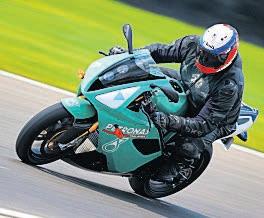

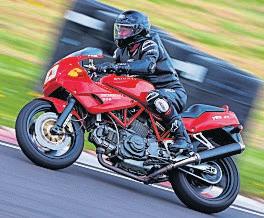







































































Having laid the foundations with the S 1000 R, BMW’s gone back to the drawing board and cranked up the spec and spice in a bid to create the sauciest supernaked the sector’s ever seen.
Wings aside, you’d be forgiven for thinking much of the new M 1000 R mimics the foundations of BWM’s S 1000 R. The frame is the same. The swingarm is the same. The wheels are the same… and so the list goes on. But this was never about reinventing the wheel; this was all about taking something that was already decent and making it a whole lot more exceptional. For the brand, the upping of the ante was not only necessary, but also logical. They had the tech, they’d done the development, so why the hell wouldn’t they raise the bar with a 200bhp-plus supernaked? Or to be more precise, to launch the most powerful production supernaked known to motorcycling?
BMW claims the ‘M’ makes a whopping 207bhp, which is hard to dispute considering the ShiftCam motor that powers it is the exact same masterpiece that fuels the brand’s new S 1000 RR. It’s got the same internals, the same throttle bodies and even the same gearbox ratios, with the only major difference being to the rear sprocket’s tooth count, which has been increased by two to ensure this motorcycle is nothing short of ludicrous. But to counter the craziness of the specs and make the bike still viable for the likes of you and I, the supernaked’s been kitted with additional super-smart tech. Think brake slide control, engine brake options, stoppie control and a raft of other counter measures to help you from throwing this weapon at the scenery each time you crank the throttle. It’s massively customisable, too, with four pre-set rider modes, plus three additional ‘Race Pro’ options that allow you to dial in the settings you want. You get the point, this thing is dripping with top-totty tech, all viewed on the bike’s generously sized 6.5in TFT dash. What you don’t get on any other BMW model is the aforementioned bi-plane wings, which actually look pretty trick in the flesh. BMW reasoned this bike, with all its added

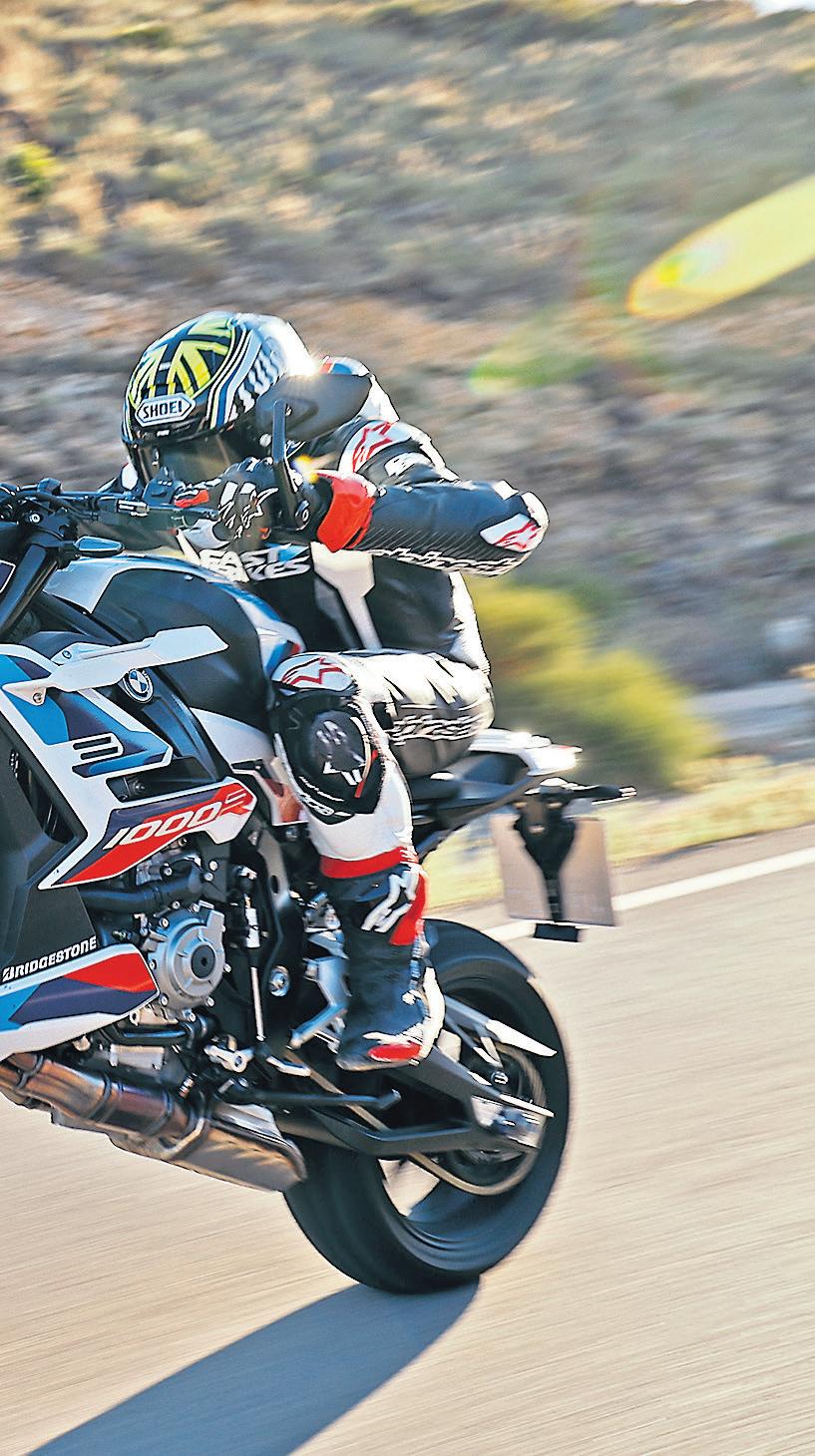
oomph, wasn’t safe without their addition – claiming that they work from as low as 60mph and deliver an additional 11kg of downforce once your police chase reaches speeds of more than 120mph. In reality, to take on the likes of Ducati’s Streetfighter and MV’s Brutale, they likewise needed a motor with a crazy power figure and aerodynamically ratified protrusions.
Unlike on the S, there’s no option for manual suspension (or a conventional key ignition), whether you opt for the entry spec M or the carbon-clad Competition version, that both come with lightweight wheels (forged S/carbon M), plus many more treats. The pogos have been completely reworked, with a broader spectrum of adjustability, plus enhanced refinement and improved performance. The wheelbase is slightly shorter, owing to the bigger rear sprocket, and there’s a generous littering of M goodies to goggle at, such as the pegs, graphics, and M-spec blue callipers that have been nabbed off the M 1000 RR. Add into this smorgasbord an adjustable steering damper, folding brake and clutch levers, plus a lightweight battery, and you’ll have a good idea of what’s on the cards.
Something that’s not so blatant on the eye but has made a massive difference to the tech on the bike is the fitment of a yaw control system that basically tracks the alignment of the front and rear wheels. It means the bike’s six-axis IMU has another playmate to work with, offering new tricks as a result. Brake Slide Assist is something you probably thought you never needed in your life, but BMW clearly does. It’s a package that works by limiting the angle of slide achieved through rear brake application, thanks to the above mentioned gismo. The more upright the bike, the more angle you’ll get before the ABS system weans off braking power to stop you getting more crossed up than Bambi on ice.
WORDS: Bruce Wilson PHOTOS: BMWIt gets the same engine as the new S 1000 RR. Yep, that means it packs a healthy 207bhp, and features the brand’s coveted ShiftCam technology that’s designed to deliver a spread of power throughout the rev range. The top end of the engine has been nabbed from last year’s M 1000 RR, which goes to explain the hike in performance and why peak power doesn’t kick in until 13,750rpm. But don’t for one second think that means this bike is lacking in grunt, because it’s not. It just keeps going when others quit.

The thinking behind the addition of winglets isn’t just aesthetic, with proven gains in braking performance being just one of their attributes. They also claim to give the bike a more planted front end when cornering and reduce the risk of power wheelies under acceleration… which might not be such a good thing in our book.
BMW hasn’t left many stones unturned in the tech department, bringing in a raft of new rider aids such as slide control, engine brake control and a pit lane limiter. There are also four different rider modes on tap, plus three customisable ‘Race Pro’ slots. DDC and keyless ignition come as standard, as does LED lighting, a 6.5in TFT dash, heated grips and endo control. It’s a smart piece of kit.
The M 1000 R comes kitted as stock with the brand’s proven Dyanmic Damping Control suspension. The semiactive electronically adjusting pogos have been enhanced with wholly new damping characteristics to suit the winged wonder and can be customised to suit a rider’s preferences via the ‘Race Pro’ set up options, or simply capitalised on via the multitude of rider modes that alter the suspension’s characteristics according to the selected setting.
A combination of grip-less seaside roads and 20mph zones meant the ride took a bit of warming up. But it was also an opportunity to see how it behaved when dawdling. I had my riding mode set to dynamic, which is fruity but not crazy, and I was pleasantly surprised by the table manners of this 207bhp beast. It had decorum, that was for sure, with the engine never hunting or feeling awkward as I tickled the motor at all of 3000rpm.
Truthfully, it surprised me how punchy the thing was, having expected it to be anything but owing to peak torque being claimed all the way up at 11,000rpm. The fuelling was spot on and the slick gear box, aided by the Shift Assist technology, meant changing cogs in either direction was effortless. The handling wasn’t bad either, but I picked up on a weird hinged moment when committing
to bigger lean angles. The bike would almost hesitate before flopping on its ear, and I would later learn that this sensation was exaggerated at slow speeds. The guys at BMW said it was down to the Bridgestone RS11s fitted to the bike rather than a trait of the machine, but I had no way of proving if that was solely the case.
On tight twisties I kept the bike in second and nailed it everywhere, basking in the buzz of the inline-four as much as possible. It was quick, no doubt about it, but lacked the sensation that went with the speed. Sure, the exhaust note would bark out a meaningful tune and I’d get a rush from the pace of the BMW, but it wasn’t bucking around, wheelieing everywhere or making me feel like I was inches from death… as per the S 1000 R, the M just delivered but without the soul of a menacing motorcycle.
The anchors (that are actually Nissin but branded ‘M’) are awesome, with loads of feel on tap as you trail into corners. More to the point, the stopping power they harnessed was pretty special and would shame many a sportsbike.
By the time we’d reached our first photoshoot location, I’d also had a chance to grasp that the handling was much more consistent at speed. The weird hang-up I’d experienced at slower speeds was no longer an issue… hairpins aside. The bike actually pitched in with pace and felt planted
on its ear as I forced the face of my sliders into the Tarmac. I didn’t have a problem with the S’s handling or frontend feel, and all I can say is the same for this bike. Have the wings (and all the claimed downforce) really made that much of difference? I don’t know. Have the revised suspension settings revolutionised its characteristics of cornering? I’d be a liar if I said I could tell much difference on the roads – or at least without the bikes back-to-back. And I think BMW realised that, too. The resolution came in the form of a racetrack.
BMW M 1000 R
Engine Type: 999cc, inline-four Bore x stroke: 80mm x 49.7mm
Compression: 13.3:1
Fuelling: Electronic fuel injection

Claimed power: 207bhp @ 13,750rpm
Claimed torque: 113Nm @ 11,000rpm
Electronics RBW/drive modes: Yes
Traction control: Yes
ABS: Yes
Wheelie control: Yes
Launch control: Yes
Quickshifter: Yes
Autoblipper: Yes
Chassis
Frame: Aluminium bridge frame
Front suspension: 45mm USD forks with fully adjustable DDC technology
Rear suspension: Electronic monoshock with preload, rebound and damping adjustment
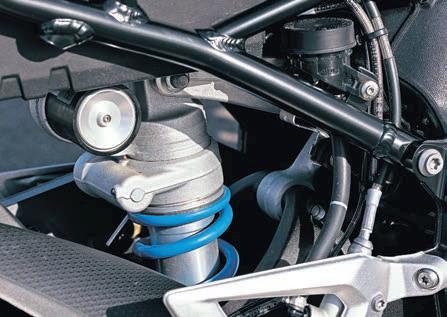


Front brakes: ‘M’ monoblocs, 320mm discs
Rear brakes: ‘M’ single piston calliper, 220mm
disc
Dimensions
Wheelbase: 1450mm
Seat height: 840mm
Wet weight: 199kg
Fuel capacity: 16.5 litres
INFO
New: £19,480
Contact: www.bmw-motorrad.co.uk
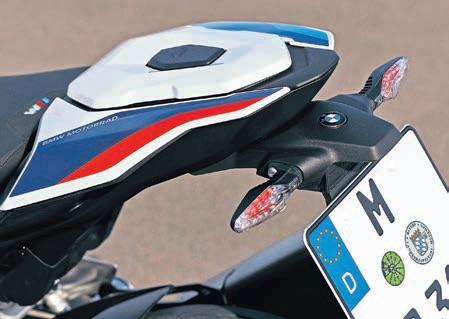
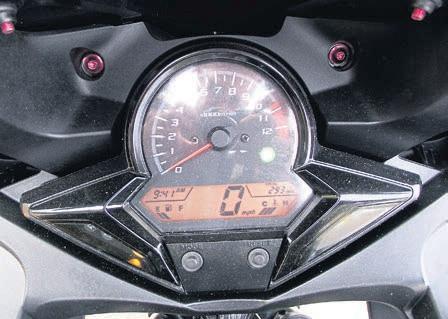
Honda introduced the CBR300R in 2014, replacing the CBR250R (comprehensively outgunned by Kawasaki’s Ninja 300). It got a 35cc capacity hike, cosmetically altered to resemble the rest of the CBR range and ABS as standard.

We tested a 2017 model with Scorpion end-can, aftermarket levers and rubber grips, solo seat unit (original seat is available), and anodised bolts from The Land That Taste Forgot (dealer will happily replace these!)
Give me some spec
A 286cc, single-cylinder motor, putting out 30bhp @ 8,500rpm with maximum torque of 19.9lb-ft @ 7,520rpm, is housed in a steel diamond frame. Seat height is 785mm, dry weight 164kg. Top speed is an estimated 104mph. Bringing the CBR300R back to zero is a single 296mm disc with 2-piston calliper up front, supported by a 220mm single disc, single calliper rear.
So what is it like to ride?
785mm sounds quite tall, but like a lot of smaller capacity bikes with sporting pretensions it’s narrow, making it accessible to a lot of smaller riders. In 1st and 2nd it’s lumpy and not a nice place to be. Short-shift to 3rd as soon as possible, and things get a lot smoother. What the CBR300R has is torque in the right place; open up and
it’ll build speed rapidly; overtakes aren’t an issue. It’ll hold motorway pace, no problem. And the fairing and little screen do an effective job of deflecting the air around the rider.

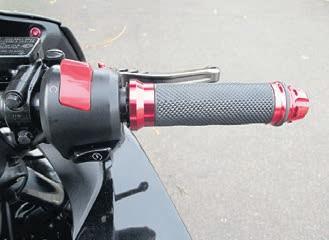
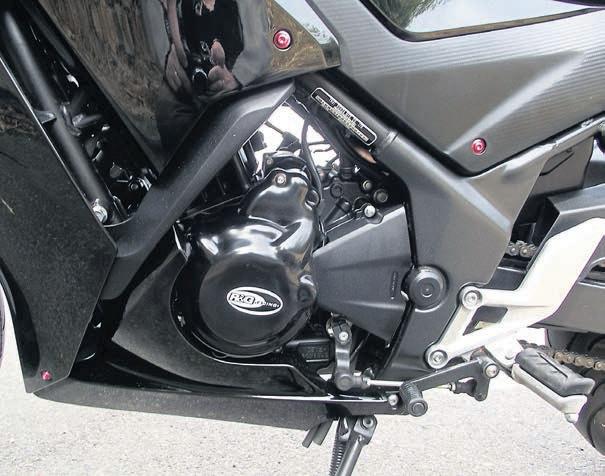
Town work? The light clutch is ideal; the box is solid if a little clunky.
Brakes have all the power you need and with the levers set right have good feel. (The aftermarket levers had really good span adjusters. I spent a little time before pulling away setting them where I’d like and I’m so glad I did.)
With a bike with this geometry, handling is always going to be it’s strong point. On major A roads with wide, swooping sections the little CBR just glides from one corner to the next. Country B roads are also a joy; it handles so well I was flowing through bends I take more slowly on bikes with a larger capacity. But be aware of the suspension. It is budget and on bumpy roads it shows.
I think the CBR300R is, if you want a sporty look, a decent place to go to between your 125 years and stepping up to full licence a couple of years after A2. It’ll teach you about handling and how to get the best out of an engine. More experienced riders can have fun squeezing the most out of the package, but ultimately you will want more.
What nick is it in?
Just 290 miles on the clock and clearly kept indoors, it’s in great condition.
What’s it worth?
The dealer wants £3,499 for a 2017 bike with just 290 miles on the clock (pre test) in great condition. Searching other dealerships, there is just a smattering of used bikes out there, with prices ranging from £2889 for a 2014 bike with 5105 miles logged, to 1506 miles for £3499.

To test this bike, contact: East London Kawasaki/ Bacons Motorcycles 737-741 Eastern Avenue, Ilford, Essex IG2 7RT Tel: 020 8252 6020 www.baconsmotorcycles. co.uk/
WORDS and PHOTOS: Bob Pickett
WORDS: Mikko Nieminen
PHOTOS: Dave Manning, Mikko Nieminen
I have never had a bad ride in the Lake District. Not even when the weather has been poor, which could easily take the shine off many rides. In the Lakes, bad weather somehow fits the scenery better, makes it moody and dramatic, rather than dull and diluted. And many of the roads there are fairly small and slow, so it doesn’t really seem to matter that much – the views are still spectacular, and the riding good.
So, when Martin from Riding Edge Motorcycle Adventures suggested including a route in the Lakes in our Great Winter Rides, I didn’t take much convincing. The only question was which route to pick? We needed something that would highlight the majestic scenery of the Lakes, but avoid the bits that are most likely to close in bad winter weather. Luckily, Martin has decades (I’m being kind, and won’t say exactly how many decades) of local knowledge, so I could safely leave the planning to him. All I had to do was check the bike over, wire in the heated kit (because, let’s face it, it could get a bit chilly), and be there on time. It really pays to be friends with a tour guide!
We started our ride in Coniston, pretty much at the heart of the Lake District, but that was mostly just because I had found a ridiculously cheap place to stay there (the YHA hostel, highly recommended).
The route that Martin had planned was a circular 100mile ride, so you could really start anywhere along it. What I liked about the route as I studied it before the ride, was that it took in some bits that I had not ridden before, despite spending plenty of time riding around here. There were some old favourites, too, so I knew I was in for a good ride.
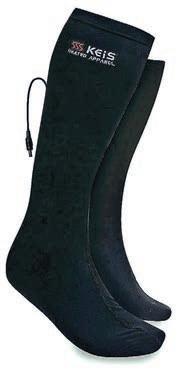
Keis kindly provided heated kit to keep me warm from head to toe on the Great Winter Rides. One item that should be highlighted is the heated socks (£89, www.keisapparel.com).
I never realised that heated socks were something I needed in my life, but I do now. You just put them on, connect them to the battery, and enjoy warm feet no matter what the temperature.
The fact that Martin had picked some routes that were new to me, even though they had been right under my nose for years, goes to show the power of local knowledge. If you want to discover some new routes in the Lakes, or if you haven’t been there yet and don’t want to miss the big hitters, give Martin at Riding Edge Motorcycle Adventures a shout. www.ridingedge.co.uk | ridingedge. mca@gmail.com | tel. 07721421016.
For this trip, we stayed in a YHA Youth Hostel in Coniston. Don’t be put off by the word ‘youth’, as I didn’t see anyone under 30 there. Instead, what I found was a comfy bed, tasty breakfast, an interesting old building with mining history, and easy access to the best roads in the Lakes. All for less than a tankful of petrol. There are plenty of hostels around the area.
Visit: www.yha.org.uk
on the route for that matter, it’s just a big circle after all, so you won’t miss anything).
Description: Circular route covering A and B roads. Some sections are single tracks with passing places as you are climbing up to higher ground. The views are good all the way, ranging from quaint villages to rugged stony passes.
Distance: 100 miles.
Time: Allow a full day so you can have plenty of stops for photos, coffees and lunch.


Fuel: We filled up in Coniston before the ride, but you can also find fuel
you need any in between, it’s not a long detour to find some.
Cafés: There are plenty of them. The Crosby Snack Shed is the first one soon after Broughton-inFurness. There’s the Sawmill Café just before Wast Water, and then the Woodland’s Tea Room at Santon Bridge. After stopping there we couldn’t even think of more cake until Keswick, where choice is plentiful.
Curiosities: For me, the highlight was Newlands Pass. There’s a nice place to stop at the top where you can admire Moss Force waterfall.
WORDS: Mikko Nieminen / PHOTOS: Gary Chapman
We all want to be great riders. Of course we do. But being a great rider doesn’t just happen overnight. It takes a lot of commitment. And it takes the right approach. To give us a fighting chance to get this right, we asked Ryan Decarteret, National Operations Manager and Coach at Rapid rider training, what was the best way to improving your riding. The answer? Reading the road.

The bad news is that it’s not quite as simple as picking up a copy of the Highway Code and memorising it. The good news is that it’s totally achievable when you know how, and you are willing to put the work in. Here’s what’s involved…
MB: If we want to get better at riding, what’s the best way to develop our skills?
Ryan: The single most transformational thing a rider can do for their riding, is to evolve their ability to see and interpret detail at speed. Great riders can observe and interpret vastly more detail, much earlier than novices, and at far higher speeds. This allows them much more time and space to react to the road ahead, and effortlessly handle whatever comes their way.
Learning to read the road involves the development of observation and interpretation skills. We need to be able to identify large amounts of detail, and here’s the crunch: we need to make sense of what it means to us.
MB: So, we need to improve our observation. How do we do that?
Ryan: The process of observing and gathering information should be early, detailed and continuous.
Early, because the sooner a rider sees the information, the more time they have to process the implications and develop a plan to react.
Detailed, as riders need to learn to observe all of the detail ahead and behind them in order to decide if it might affect their riding plan.
And continuous, which means that riders need to develop ‘rolling road vision’, continuously scanning and updating their observation rather than fixating on any particular hazard. But, of course, highly developed observation skills are not enough.
MB: Oh, so what else do you need?
Ryan: Riders who want to achieve their potential must learn to make sense of what they see and accurately assess the implications for their riding. They must apply the ‘so what’ test.
We see an adverse camber. So what? It could affect my traction adversely and throw me off my line.
We see a car in the rear-view mirror. So, what does it mean to me? The car is gaining quickly, and may affect my decision to use my brakes.
We see an empty side road. So, what does it mean to me? A car might arrive as I approach and am past the point of no return.
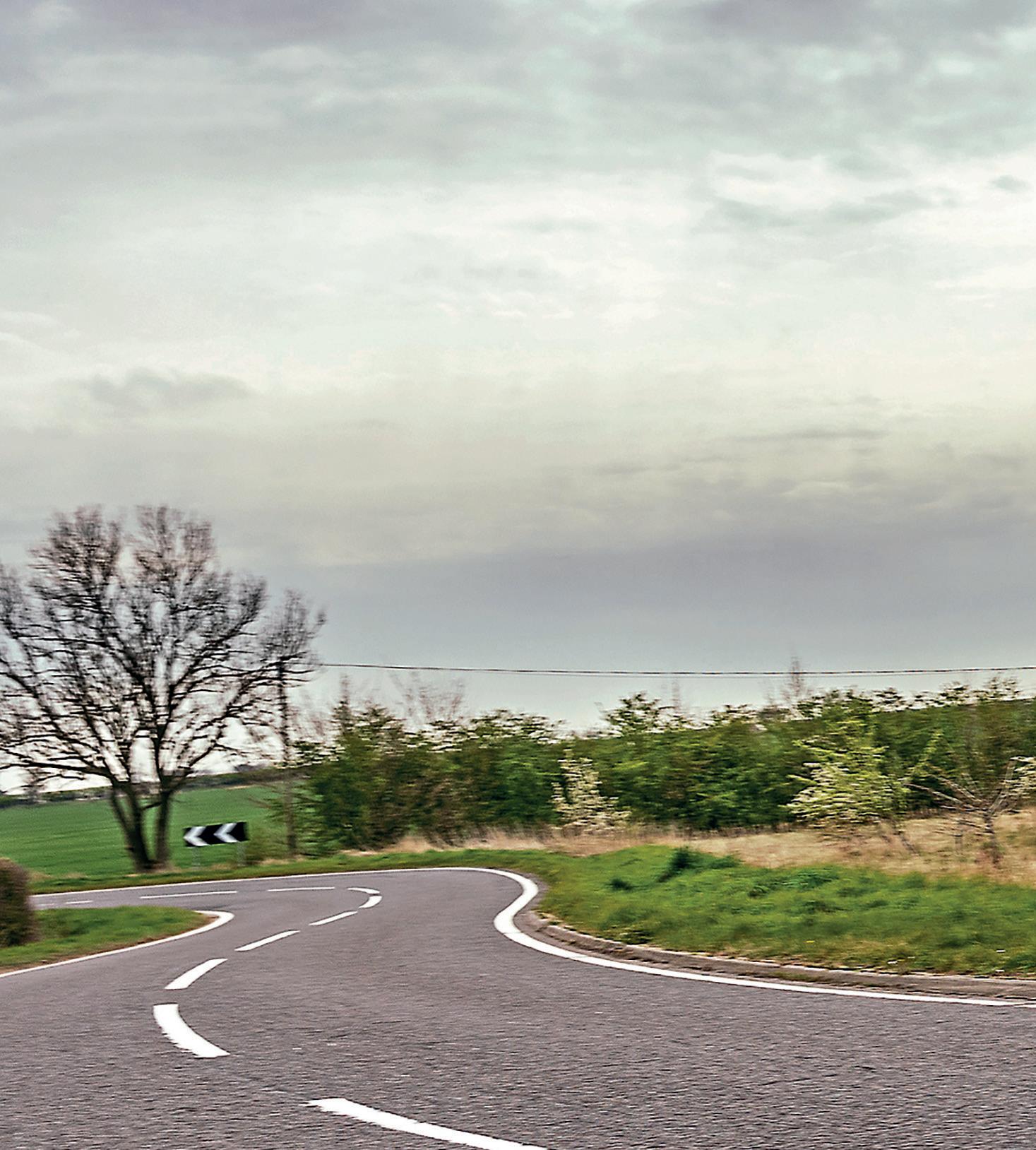
MB: How do we develop our ability to ‘read the road’?
Ryan: Like any other skill, our ability to ‘read the road’ will develop in proportion to the amount of focused practice we dedicate to it. If we don’t want this to be a limiting factor in our riding, we need to go way beyond the level of skill that will result from experience alone.
Crucially, the skill levels we need to develop are proportional to how fast we intend to ride. The key to developing these skills is to start slow and go for detail. Focus on how early you are seeing new information, and how much detail you are gathering, and remember this is a continuous process (rolling road vision). The more information you gather, and the sooner you gather it, the more time you have to react.
Once you are making progress with the amount of detail, focus on interpreting what you see. Add the ‘so what’ test. Short bursts of practice on every ride, perhaps adding a commentary, will very quickly develop this skill. Start off at slower speeds until you can gather and interpret every piece of available information, then build up your speed. The faster you go, the more skill it requires. And it is this process of constant evolution that causes our brains to adapt to the new challenge. You can only ride as fast as you can see, so investing in this skill will not only make you safer, it will also make you faster.
MB: What about making a ride plan?
Ryan: For a rider who has developed a precise and complete understanding of the road, planning is a very intuitive skill. It is quite natural for us to avoid danger in any way we can. The problem most riders have isn’t with planning, it’s with failing to recognise the danger in the first place or recognising it too late.
Founded in 1997 by a group of ex-racers and current police riders, Rapid set out to deliver a fresh approach to rider development with their own, relaxed, no-nonsense approach to coaching. No formality, no student bibs, just passionate riders being coached by the most highly qualified professionals in the business – and having fun. The company claims to offer the most comprehensive and advanced rider coaching available in the UK. www.rapidtraining.co.uk
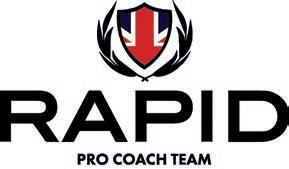
Ryan is a passionate motorcyclist, Rapid National Operations Manager and Coach with a background in surveillance and covert police riding, with around one million miles of riding experience (and he says he’s still learning).
Once a potential danger has been recognised, the rider has to decide what to do about it. This is the planning stage, and it involves deciding where to position the bike relative to the danger; what speed to travel as we negotiate the danger; and what gear we need to select based on how responsive we want the engine to be while we navigate the situation. Finally, we also need to consider what, if any, signal we must provide for other road users, and when we should provide it.
MB: Talk us through the elements of planning. What’s involved in choosing your position?
Ryan:A rider positions a bike to optimise safety, stability and view.
You can improve your safety, for instance, by creating space between yourself and potential danger. Stability could be optimised by something as simple as selecting a dry section of road rather than a wet line. View is always important, but especially good to remember when positioning for bends.
Reading the road effectively allows the rider to identify all of the risks early and make a simple decision about where and when to position the bike to create the most space between it and the hazards they have identified taking into account all the other factors.

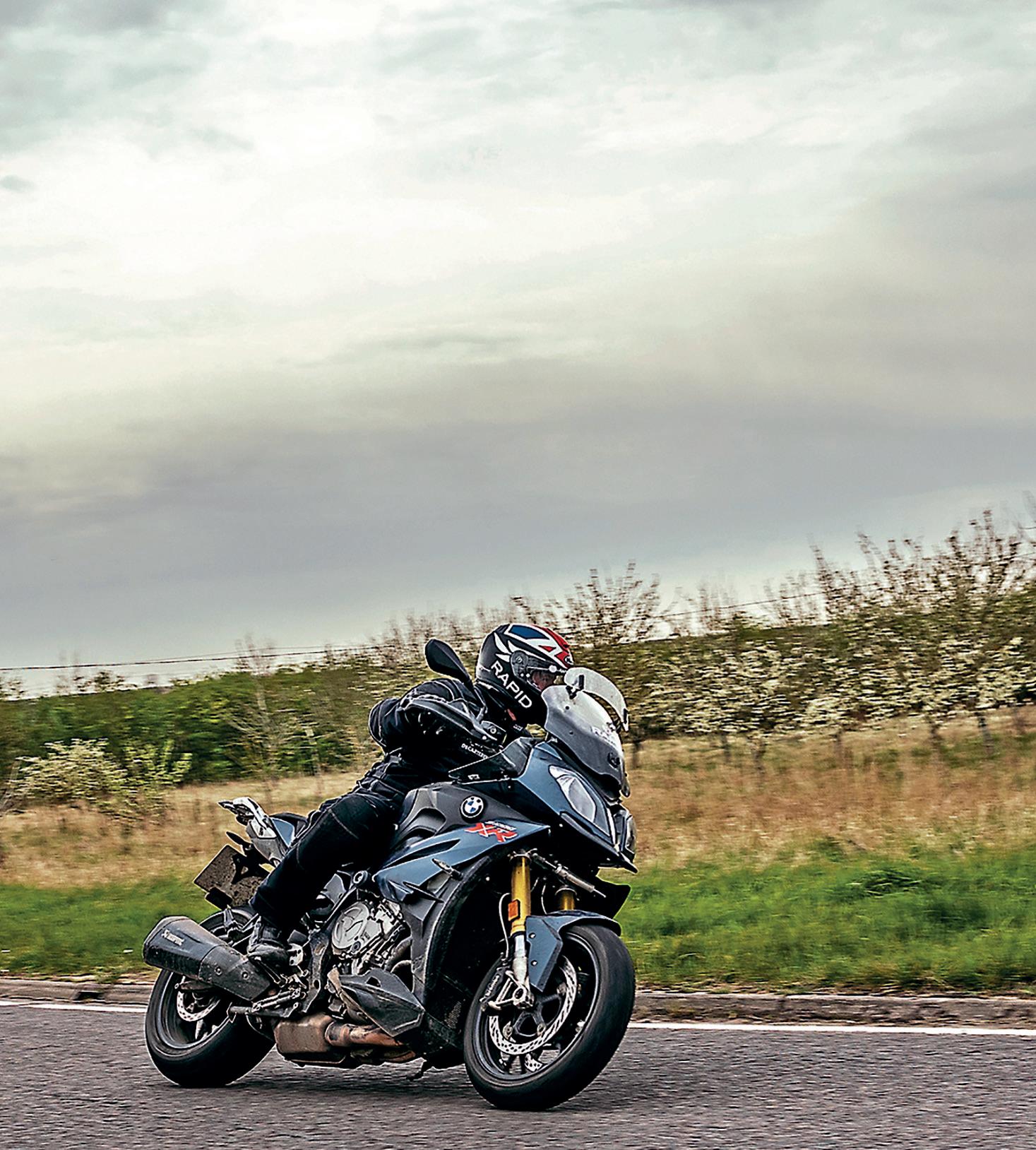
MB: And how do you choose your speed?
Ryan: Taking into account how close the bike will come to the recognised danger or dangers, the rider has to adjust speed to ensure that in the worst-case scenario where the risk played out, they would be able to avoid conflict by either stopping, changing speed or altering course.
MB: What about the gear choice?
Ryan: The rider will select a gear that provides the desired level of responsiveness and control to navigate the danger and leave safely and efficiently, so this depends on the individual circumstances.
MB: Is there an optimal approach that you can apply to most situations?
Ryan: In the real world, we are often juggling position, speed and gear, relative to multiple, simultaneous hazards, and making decisions based on our view of the best balance between them. This is where complexity creeps in and why we can’t ride by a simple formula.
Over the years, I have had a few different chances to do a bit of advanced rider training. It has always improved my riding, but I have always faced the same problem. Me.
I am a very goal-oriented person. Give me a target and I will go at it like a rabid dog, chasing it until I get there. But as soon as that happens, I lose interest quickly and find something else to chase. And when it comes to training, it means that a lot of the learning soon dribbles out of my brain, and I have as good as forgotten it.
I was at this same situation a few weeks back when I went out with Ryan from Rapid for a two-day advanced riding coaching session. As I headed off with Ryan following me, I thought that I was doing okay. I ride a lot for work, and have done so for many years, so this was okay. However, as soon as we swapped places and Ryan gave a commentated demonstration ride, I realised how much harder I had to work to ride as well as I possibly could.
The difference between what I had considered a decent level of riding, and what I realised was possible to achieve as part of the training, was like night and day. I had not only fallen into the old trap of not really
There is rarely one, single, best way to do anything. Take a right-hand bend, for example. Advanced riding theory would suggest we move to the left to extend the view into it. But, what do we do if there is a hazard on the approach, such as a blind junction on the left? We may consider compromising our view and move to a more central position to stay clear, or we may decide to maintain our position, but reduce speed. But, to complicate things further, let’s assume the road is wet, but there is a dry strip near to the central white line. Do we then move to the dry section to gain extra traction and maximise our clearance from the junction on the left, at the expense of restricting
applying myself since the last bit of training I did, but it also felt like this was a whole new level of riding that I was being introduced to. It seems that there’s advanced training, and proper big boys’ advanced training.
I feel like my riding improved in leaps and bounds during the two days with Ryan, but I’m also conscious that I can aim a lot higher, so I’m not done with this yet – I want more.
our view into the bend and putting ourselves in potential danger from the opposing traffic?
The truth is, many riding decisions are based on complex information with multiple conflicting hazards and many potential solutions. No two bends are the same, and even if they were, no two rides through them would be the same. Planning decisions are dynamic and complex involving trade-offs and prioritisation. And the faster we ride, the faster they have to be made, and the more important it becomes to get them right.

Triumph has improved the Tiger 1200 in almost every way. The fight for the top spot in the large adventure category suddenly got a whole lot more interesting!
There’s no denying it, when it comes to heavyweight adventure bikes, the BMW GS and the GS Adventure are the benchmark. They sell the most, they are household names and – like them or loath them – they are excellent at what they are designed for.
None of this has been lost on Triumph, who would dearly like to chip away at some of the boxers’ market share. And to do that, Triumph has rolled out the all-new Tiger 1200 family. With almost everything but a handful of bolts being brand-new on the bike, and all the vital statistics improved, could this be a challenge that will shake up the adventure market? Apart from the BMWs, there are no other shaft-driven big adventure bikes to choose from, so the fight on that front will be a close one, but if you spread the net to cover chain-driven bikes, too, the likes of Honda, Ducati and KTM enter the competition, and there’s suddenly ample choice.
Triumph reckons that in the new Tiger 1200 it has a package that can take on all of the big adventurers. In fact, it says that the brief was to create the most agile and manoeuvrable large adventure bike that you can buy.
We travelled to Portugal for the launch of the new models to see if the brief had been met.

There are plenty of interesting smaller capacity adventure bikes right across the cc spectrum, from the Royal Enfield Himalayan to the Aprilia Tuareg 660, and on to Triumph’s own Tiger 900 series. But it tends to be the biggest bikes that sell the most. And that’s the slice of the cake that Triumph is reaching for with the Tiger 1200.
To compete with the flagship products of your competitors you need to throw everything, and the kitchen sink, at the product you’re offering. And for this reason, the update for the 2022 Tiger 1200 is a fairly major one. Crucially, Triumph has lowered the weight up to 25kg compared to the previous models, increased the peak power and
torque that are now 148bhp/130Nm, and with prices starting from £14,600, it has made the bikes competitively priced.
As is common in the class, Triumph has two different flavours of the Tiger 1200: the GT models designed purely for roads, and the Rally bikes for more adventurous riding with off-road capability.
But it’s not as simple as that. Of course it’s not. There are three different variations of the GT, and two of the Rally within the range. It all gets a little bit confusing when you get into the detail, so check out the ‘Meet the family’ boxout for the lowdown, but basically you can get a bike that’s more suited to road than off-road or you can get a bike that’s a bit more adept off-road, although still good on the road, too. In both cases, you can choose between a big tank or a very big tank, and between lots of tech or even more tech. And there’re lots of accessories to further personalise the bikes, although you can’t turn, say, a GT to a GT Pro by just accessorising it because hill hold and cornering lights aren’t available as options for it.
Numbers are only ever indicative at best at telling you how a bike feels to ride, and with the Tiger 1200 you notice the difference between stats and practice as soon as you get on the bike. Not everything is as it seems…

The first thing you’ll notice is the seat heights. Although adjustable, they sound fairly lofty on paper, ranging from 850mm/870mm on the GTs, to 875mm/895mm on the Rallys. However, throwing your leg over the bike reveals that the new narrow front of the seat really helps you to reach the ground better than expected. I have 31-inch legs, and after the suspension had compressed under my weight, I could have both booted feet on the ground with the seat in the high position on the GTs. Even on the Rallys I was not far from reaching the ground, and certainly not feeling like I was on stilts.
The seat itself, and the rest of the riding position,
are instantly comfortable, and stay so for long stints in the saddle. Our road ride was 200 miles, and it felt like just a little bimble down the road. There’s nothing I would change in terms of the riding positions of the bikes. And that includes the adjustable screen that has a nice design that makes it super-easy to operate with one hand. Wind protection is not quite as comprehensive as on some bikes, but it takes the edge off the blast, and there’s no buffeting round the helmet. There’s no denying that even with the impressive weight loss, all the Tigers are heavy bikes. Kerb weights range from the GT, which is the lightest at 240kg, to the Rally Explorer at 261kg. However, if you had ridden them without seeing the specs, you would not believe them to be that heavy. The weight is low in the chassis, apart from the fuel, of course, that sits at the top of the bike. Pushing the bikes around a car park is okay, but the real surprise comes when you ride them: the agility that the bikes offer is quite unexpected from something this big. They are nimble in slow speeds; easy to squeeze through town traffic; and as the speeds rise on open roads, they corner quickly and accurately, without losing that reassuring stability that comes with weight.
Even more impressively, there isn’t a big difference between how the different models feel to ride. Naturally, the riding position is slightly different because of the different sizes of the bikes, and on the Explorer models the bars are 16mm higher than on the others. When you jump from the 20-litre tanked GT to a 30-litre one, you instantly notice the front of the bike being bigger, but curiously the handling doesn’t seem to alter much at all. And even more puzzlingly, when you then jump on the Rally bike with its longer suspension travel and big 21-inch front wheel, you would expect it to be a bit slower round the corners and to feel distinctly different. But it doesn’t, really. If anything, I thought it was easier to ride, flowing through the corners smoothly, and maintaining the line just as well as the GT. In fact, I thought it was so good on the road that if I had to choose my favourite of the bunch, it would be the Rally Explorer all day long.

The new engine on the bikes is a three-cylinder 1160cc powerplant, with its bottom end taken from the Speed Triple, but pretty much everything has been overhauled to make the engine right for the Tiger. The headline update from the previous model is that it now has the T-plane crank with its irregular firing intervals at 180, 270 and 270 degrees – as previously seen in the Tiger 900 range.
With the T-plane set up you get better low-end delivery, but the engine still spins fast and the peak power of 148bhp is reached at 9000rpm. Peak torque of 130Nm arrives a bit earlier at 7500rpm.
The downside of the T-plane is that there is now noticeable vibration from the engine. It’s not so bad that it bothered me on our ride, and for some reason it seemed less noticeable on the Rally models, but it’s definitely
there, and may put off some riders who want a silky-smooth feel.
But if you can dig the vibes, the power delivery is delightful. The acceleration is rapid, and there seems to be ample power in every gear. The gears are pretty tall as well, so sometimes you have to remind yourself to shift up to bring the revs down as the bike pulls so hard, and gets up to speed so quickly and effortlessly.
Riding the Tiger fast is a very easy thing to do, and you can soon forget that this is a large adventure bike when you attack corners with enthusiasm. That is, until you start scraping the pegs as the ground clearance isn’t quite as ample as the power and cornering ability of the bike.
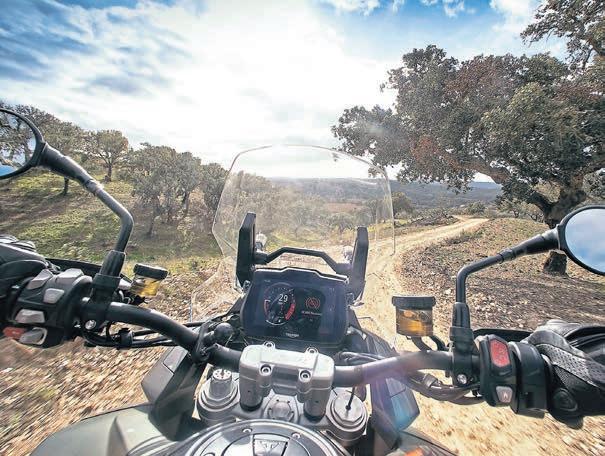
Ride modes change the throttle map, ABS, traction control and suspension settings, although you can further adjust each element if you like. For me, the throttle maps on the road were a little on the aggressive side on the initial opening of the throttle. The Sport being the feistier, but even the Road mode requiring a steady wrist.
Suspension is just sublime. The semi-active system has nine levels of damping adjustment and automatic electronic preload adjustment, and the action from the Showa 49mm USD forks and monoshock is great. The bike takes hits from bumps with the compression not sending a shockwave to the rider at all, and on rebound it’s even more subtle and stops the bike from bouncing far better than I expected. Depending on how firm you set the suspension, you will get a little pitching under braking, but on the hardest level this is so much less than you expect from long suspension travel on a heavy bike.
Talking about braking, the Brembo Stylema stoppers at the front are excellent at bringing the speed down, with the adjustable levers making it
easy to adjust for your preference, and the ABS taking the drama out of the event.
On a couple of occasions I had the traction control kick into action when I was on a gravelly bit of the road, and this seemed to kill the drive very abruptly, but this could perhaps be improved by dialling in less intrusion from the system.
The quickshifter that was fitted to our test bikes worked well. The feel of the lever is a little stiff, but the changes were accurate and smooth. I know it’s a luxury that not everyone sees the point of, but with long days on the bike (like you’d expect people to have on these bikes) it just makes life a little bit easier.
All the bikes share the new 1160cc triple engine; new semi-active suspension; new frame with bolton subframe and pillion pegs; ride modes (Rain, Road, Sport); cornering ABS and traction control; Brembo Stylema front brake callipers; and a new TFT dash.

Tiger 1200 GT models are more road-focused, with 19in front and 18in rear cast aluminium wheels.
■ Tiger 1200 GT Pro, also with 20-litre tank, gets cruise control; quickshifter; hill hold; auxiliary lights; cornering lights; heated grips; a centre stand; and two extra ride modes (Rider customisable and Offroad). Available at £16,700.
Price: From £14,600
Engine: 1160cc inline 3-cylinder, l/c, 12 valve, DOHC
Power: 148bhp (110.4kW) @ 9000rpm
Torque: 130Nm @ 7000rpm
Transmission: 6-speed, shaft final drive
Frame: Tubular steel frame, with forged aluminium outriggers. Fabricated, bolt-on aluminium rear subframe. Twin-sided ‘Tri-Link’ aluminium swingarm with twin aluminium
torque arms
Wheels: GT range: Cast aluminium, 19 x 3in, 18 x 4.25in Rally range: Spoked (tubeless), 21 x 2.15in, 18 x 4.25in
Tyres: GT range: Metzeler Tourance, 120/70R19 (M/C 60V TL), 150/70R18 (M/C 70V TL). Rally range: Metzeler Karoo Street, 90/9021 (M/C 54V TL), 150/70R18 (M/C 70V TL)
Suspension: (F) Showa 49mm, semi-active damping USD forks. GT range: 200mm travel. Rally range: 220mm travel. (R) Showa semiactive damping monoshock, with automatic electronic preload adjustment. GT: 200mm travel. Rally: 220mm travel
Brakes: F) Brembo M4.30 Stylema monobloc radial callipers, ABS, twin 320mm floating discs. (R) Brembo single piston calliper, ABS, single 282mm disc
Seat height: GT range: 850/870mm. Rally range: 875/895mm
Tank capacity: GT, GT Pro, Rally Pro: 20 litres GT Explorer & Rally Explorer: 30 litres
Fuel consumption: 40mpg tested
Wet Weight: GT 240kg, GT Pro 245kg, GT Explorer 255kg, Rally Pro 249kg, Rally Explorer 261kg
Service intervals: 10,000 miles or annually
Warranty: 3 years unlimited mileage warranty, with the option to extend
Roadside recovery: 2 years European cover
Contact: www.triumphmotorcycles.co.uk
■ Tiger 1200 GT Explorer with its 30-litre tank; heated seats; tyre pressure monitors; and blind spot detection costs £18,100.
Tiger 1200 Rally models are designed for allterrain riding, with 21in front and 18in rear tubeless spoked wheels and 20mm longer suspension.
■ Tiger 1200 Rally Pro (20-litre tank) costs £17,700 and gets the same spec as the GT Pro, plus the Offroad Pro ride mode.
■ Tiger 1200 Rally Explorer is £19,100, with everything that the Rally Pro has plus a 30-litre tank, and features the same extras as the GT Explorer over the Pro.
■ Tiger 1200 GT, with 20-litre tank, costs £14,600.
Another nice gadget was the cruise control, with its simple-touse dedicated buttons in the left switchgear. And the blind spot warning system on the Explorers was handy, although I can’t help myself for checking the blind spots anyway. It may sound like I’m just singing the praises of the bike with not very much to criticise, but the bikes are so good that most arguments against them will be more dictated by personal preferences than flaws in design. One thing that I didn’t like was putting the bike on its centre stand. For one thing it’s not as simple to do as you would like with the weight of the bikes, but for another, the pillion peg hanger is right where you want to put your leg to get your weight on the centre stand. I can almost hear the curses of people banging their knees there…
Other than that, the bikes are spot on. My big surprise was that the Rally had been so good on the roads, and that made me wonder if its off-road ability had been compromised. Luckily, we had another day of riding ahead of us, this time all off-road, so I was about to find out.
It’s difficult not to be a little nervous when you go riding off-road on a 249kg bike that you haven’t ridden before, but the Tiger 1200 Rally Pro was there, and I really wanted to find out how it was to ride it on the Portuguese trails.

Our route started on a big, hardpacked gravel road, and the first impressions of the bike were good. Standing on the pegs, you get a little support from the tank to help you balance there, and the bars are quite high, so you don’t feel like you are doubled up over the bike. It feels like a very civilised approach to off-roading.
As we were zooming down the gravel roads I was happy to find the bike well balanced and seemingly very stable. It floated along over the bumps with the suspension doing it’s invisible electronic work without a fail. I was getting very comfortable riding like this, but I didn’t fancy the Tiger’s chances on anything much gnarlier…
As luck would have it, as soon as that thought had entered my head, our lead rider turned off the road and
headed down a narrow, rocky single track. Here we go then… I switched from Offroad to Offroad Pro mode to stop the traction control dictating the wheelspin, and followed the man. To be honest, I wasn’t entirely convinced that this was wise, but after clearing the first few rocky bumps on the track, and powering through some rough terrain, I had to admit that the Tiger was completely unfazed by the surroundings.
Having switched the ride mode made a big difference, and the bike felt easier to ride, with no intrusion from the TC and a much smoother throttle feel. Even though there is loads of power on offer, it comes on in an orderly fashion, and everything happens in a calm and controlled manner.
So, narrow and nadgery trails were okay, then. Very impressive, I thought, but I wouldn’t like to tackle anything muddy… Well, you can guess what came next…
The muddy sections were very short and not deep at all, so they don’t really compare to the conditions here in the UK, but the slippery wet clay was enough to show that the bike was easy enough to balance through the tricky bits. The Michelin Anakee Wild rubber worked well, too, but again, I wouldn’t want to try my local lanes on them.
What made the ride more easily manageable was that the adjustable brake and clutch levers were both one-finger operable. This made it so much easier to maintain control over tricky ground. It also helped that the rear brake pedal was easily adjustable for off-roading.


The Tiger really flatters the rider, making riding trails feel much easier than it should be. Not just on a big bike, but any bike.
To prove what the bike could do, Triumph had asked World Enduro Championship ace Iván Cervantes to give us a little demo. After he effortlessly did a few wheelies, donuts and pivot turns, as well as drifted the bike like he was riding a hovercraft, I no longer felt like such an off-road hero – but it was ace to see.
Does the Tiger 1200 meet the brief?
The big question with the Tiger 1200 family is whether this is what people want from big adventure bikes? Has Triumph hit the sweet spot in the market, and is this the bike that will take a good chunk out of the BMW sales dominance?
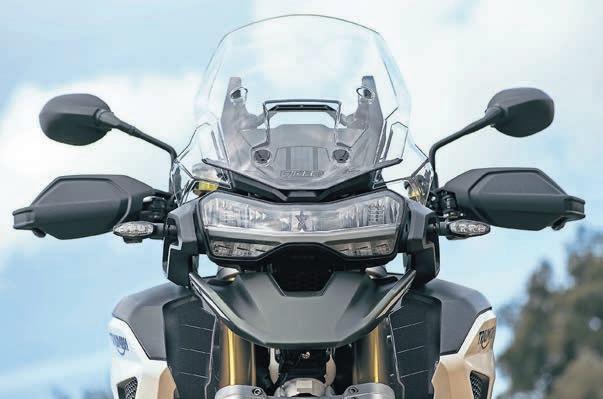
That is something that only time will tell. In the meantime, you can be certain that some will love the fact that this is a shaft-driven adventure bike with a potential to go for a 30-litre tank and enough creature comforts to keep you happy on the bike all day, any day, no matter how long the journey. Some will be put off by the vibes that others will see as character. The size will be a factor for many, but if that’s the limiting factor for you, I would urge you to try it on for size before dismissing it, as it really feels smaller than it is. At the end of the day, there are plenty of options in the range with five models to cater for different needs, and I would be very surprised if this is not a big seller for Triumph this year. Expect to see plenty of big new Tigers on the road soon!
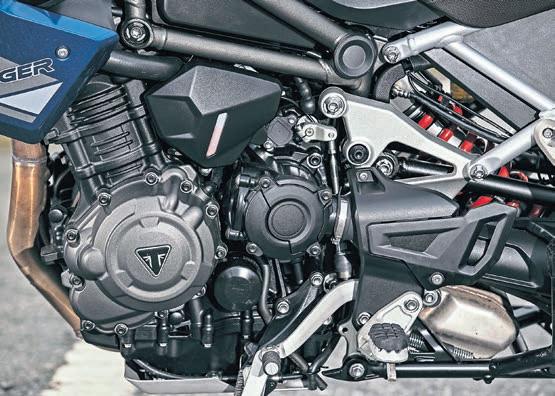
1. WEIGHT
The Tiger’s new frame is 5.4kg lighter than the previous design. It now features a bolt-on aluminium rear sub-frame and bolt-on pillion hangers, enhancements developed from customer feedback. Additional weight savings come from the new aluminium fuel tank and all-new tri-link swingarm, which is 1.5kg lighter, and a smaller and lighter shaft drive and bevel box.
All of the bikes come with seats that have been slimmed down at the front, and are two-position height adjustable (GT range 850mm/870mm, Rally range 875mm/895mm). Accessory-fit low seat shaves off another 20mm. The screen is one-hand adjustable. Handlebars are 20mm wider than before, and on the Explorer models, 16mm higher than other models. Foot peg positions have also been refined.
The Rally Pro and Rally Explorer run on an adventure-styled 21in/18in tubeless spoked set up, while the GT, GT Pro and GT Explorer employ a more
road-oriented 19in/18in cast aluminium. Metzeler Tourance tyres are fitted to all of the GT models, while the Rally models feature Metzeler Karoo Street tyres, with the more off-roadish Michelin Anakee Wild also a handbook-approved option.
4. ENGINE
The new 1160cc engine makes 150PS at 9000rpm, and 130Nm at 7000rpm. The new T-plane triple crank is designed to provide the low-down grunt of a twin, and the performance benefits of a triple at the top end. Compared to the previous generation engine, there’s new bore and stroke, crank, cylinder head, gearbox and clutch, and shaft drive and bevel box as well as a silencer.
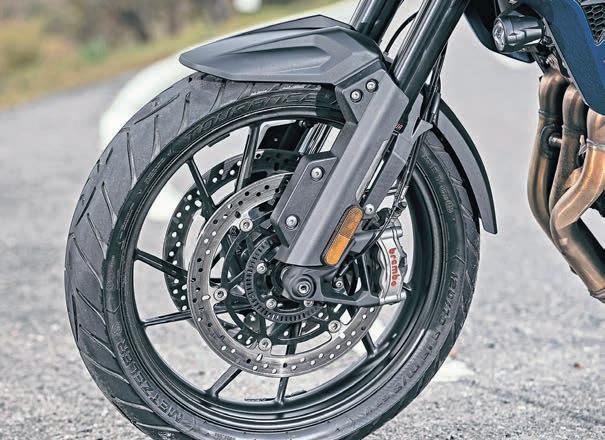
5.BRAKES
Brembo Stylema monobloc brake callipers feature at the front of all Tiger 1200 models. The Optimised Cornering ABS system is also fitted to all of the new models, supported by the IMU (Inertial Measurement Unit), for lean angle sensitive ABS intervention. Magura HC-1 levers are adjustable for reach, rider comfort and control.

If this mega launch report of the seriously capable big adventurer from Triumph is your cup of tea, then there’s a very good chance you’re going to find lots more to like in Motorcycle Sport and Leisure magazine. It’s been in the game for years – the longestrunning motorcycle magazine in the UK – providing some topnotch road tests, technical features, touring advice and sharing plenty of its hard-earned biking wisdom to those in the know. To make it super easy, just scan the QR code here and you’ll be transported to the MSL shop where you’ll be able to bag a back issue or pre-order next month’s publication. It’ll cost you less than the price of a pint and you’ll be treated to reams of top-quality motorcycle content that you can’t get anywhere else. For those without a smartphone, all you’ve got to do is tap www.classicmagazines.co.uk/ msl into your browser and you’ll be well on your way.
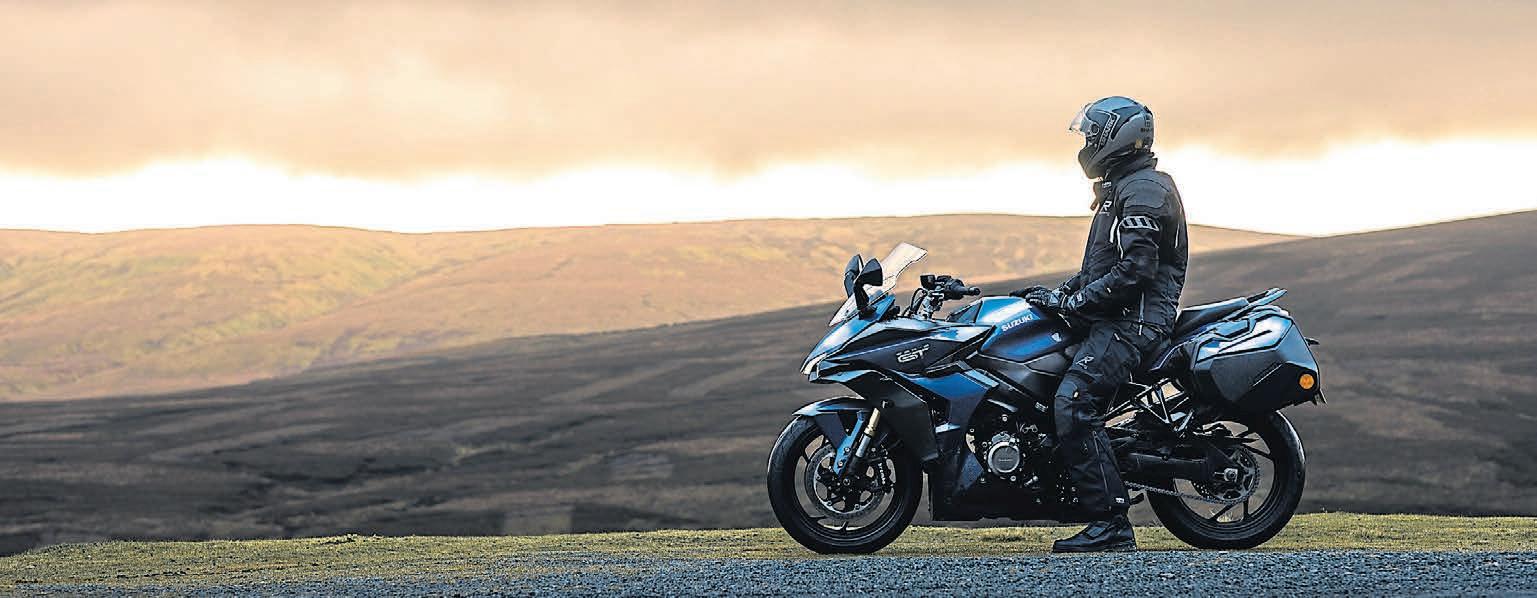
BMW 1250 GS/GS Adventure from £14,905


Triumph is quite open about going after the GS and GS
Adventure’s market share with the new Tigers. The BMW’s boxer twin engine makes 134bhp/143Nm so the difference in power is not massive. Both have a shaft drive that some love, and enough electronics to easily confuse any comparison. In terms of cost, it really depends on how you want to equip your bike, and the differences are not huge. The decision between BMW and Triumph will probably be based more on what feels right for you rather than any hard numbers.



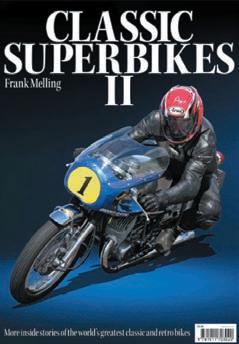

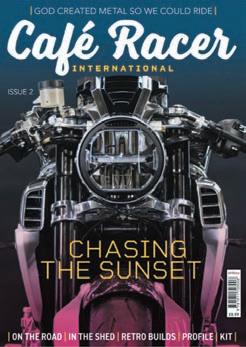

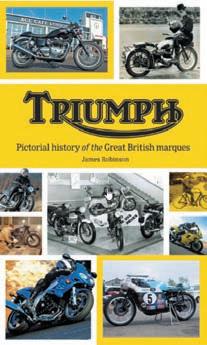






They’re probably one of the best known helmet brands in the world. Here’s what you need to know about the iconic American firm.

Bell began in 1923, originally known as Bell Auto Parts. Employee Roy Richter started with the company back in 1933 – that very same year he also started racing – his passion for motorcycles being fuelled further by the purchase of his first bike, an Indian Scout, in 1931 just two years prior. In an era where people desired fast cars and a need for speed in the racing scene, after a short stint on the track, he soon realised his skill was actually in the building of race cars and their related products… his cars going on to win many races.
Fast forward to 1945, Richter made the bold move to sell his car and invest every penny he had into buying his very own Bell Auto Parts store. After losing several close friends to racing accidents, he made the decision to devote his time to crafting safer racing products, this with a specific focus on helmets.
Ten years later, in 1954, Bell Helmets was born. The original Bell 500 helmet was created by Richter in a garage behind his Bell Auto Parts store. Since then, Bell has led the way in helmet innovation, performance
Bell produces a wide range of helmets (Prices in GBP):
Dirt – MX-9 MIPS (149.99) to Moto-10
Spherical (649.99)
Culture Classics – Scout Air (99.99) to
Cruiser Bullitt Carbon (549.99)
Street – Qualifier (79.99) to Race Star
Flex (649.99)
Within the Street category is the SRT Modular for 249.99
and, most importantly, safety, and it continues to do so today. From Supercross stadiums to the tracks of MotoGP racers, across the globe people trust the quality of Bell helmets.

Dedicating 60 years to Bell, Richter continued to develop industry-guiding helmets. His pursuit for ultimate helmet safety resulted in many ‘firsts’ for Bell – like the launch of the first full face helmet; the Bell Star; the first full-face off-road helmet, the Moto-3; Nomex liners and more. Bell’s legacy extended not only to the two-wheel world, but also to auto racing. In 1971, all 33 drivers in the USAC 500-mile race series wore Bell helmets. To this day, Bell outfits racers such as Lewis Hamilton and Charles Leclerc.
Bell has continued driving improvements across all disciplines of cycling, motorcycling and auto racing, all while upholding Richter’s legacy as a boundary breaker and pioneer. Leveraging a team of engineers in Scotts Valley, California, Bell pushes the possibilities of helmet protection, and leverages key technical partners such as MIPS to develop the best helmets possible.
The Bell Star MIPS (Multi- directional Impact Protection System) is the entry-level model of the Bell Star line of motorcycle helmets. It is made using a slip-plane design and a foam EPS liner. The EPS liner is designed to deal with main impact forces while the MIPS helps prevent brain injuries such as concussion by reducing rotational forces.

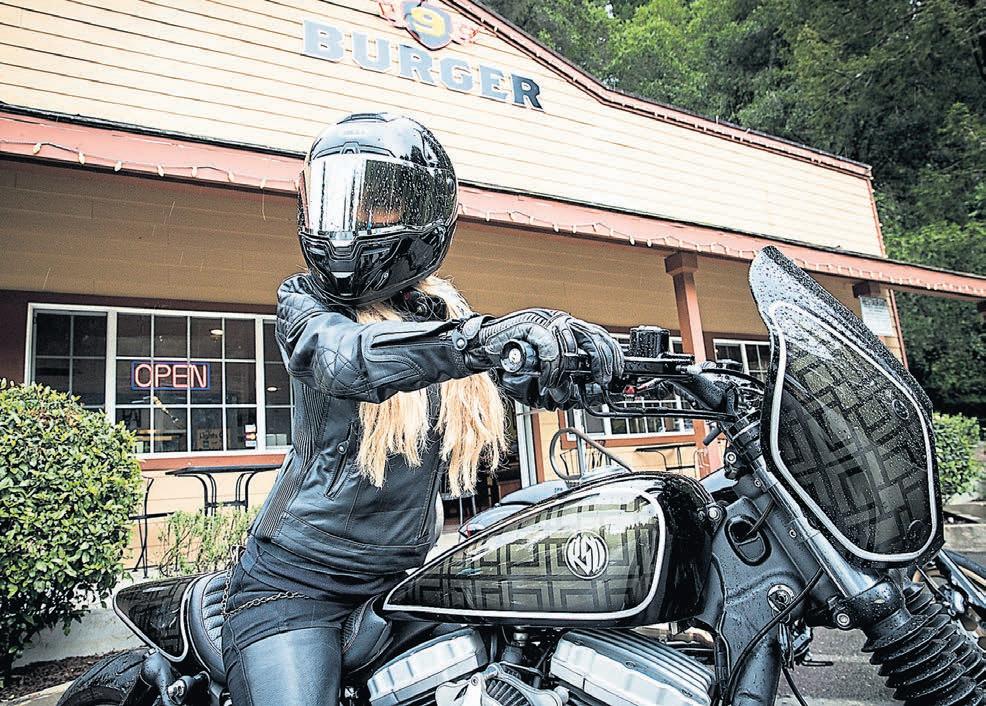

meaning when riding the front has to be in the closed position. Why have a modular then? It’s still useful; need to talk to someone, pay in the petrol station, wear glasses, all these benefit from a flip-front.
The SRT Modular is a goodlooking helmet. The colourways are simple but effective (like the red/black I tested). The fibreglass shell comes in two shell sizes. There is a recess in the lining for spectacle arms (yes, flip open the front to put it on, but this makes life more comfortable for glasses wearers). The old rule of ‘try before you buy’ comes into play again. It felt comfortable when I first put it on, but I’ve noticed a pressure point to one side of my forehead.
On the move it’s stable. Like all modulars, it is noisier than a full-face, but not too bad (the small chin curtain takes some of the blame here). At 1,750g it’s about average for a modular (there are a lot heavier models out there). Venting is reasonable and easy to operate (single top
vent, twin chin vents and a rear exit).
The internal sun visor is a good tint and sits nicely when lowered, but I don’t find the slider (placed at the bottom of the left-hand side) intuitive; if I need to raise/ lower it quickly my hand doesn’t immediately find the control. Sticking with visors, vision is good – the SRT features what Bell calls a Panovision visor meaning it is tall and wide giving good peripheral vision. It also features Class One optics, so no distortion.
The SRT Modular hasn’t received a SHARP rating yet, but it’s full-face version got four stars.
I think it is fair to say the SRT Modular is a solid performer in all areas without any standout feature. But this a reflected in the price. Do try one on first; I am not the only one to mention that pressure point, so make sure the profile suits your head shape.

Almost like a British twin but with added sustainability!

So you fancy the style and torque of a big parallel twin but want a classic and not something modern?
Shocked by the price of those iconic 60s and 70s Triumphs or the rising costs of BSA’s A10 range? Well, you could quite easily go retro-tech with one of Kawasaki’s W650s or W800s but they’re not ‘really old’, are they. Appropriating that well-known phrase… ‘You’ve looked at the rest –now try the best’... Yamaha’s XS650!
Around 1966 Yamaha could see America was likely to place legislation in the way of two-stroke motors – the firm’s bread and butter. Therefore a four-stroke was needed and 650 parallel twins were ‘the thing’ stateside. Taking crank design based around its 350 YR series and the cylinder head from a Toyota car project they collaborated on and a chassis notionally based around Norton’s featherbed design, the XS-1 was created for the 1970 model year. It and subsequent upgrades would remain on sale until 1985 – something almost unheard of from a Japanese machine of any kind!
The first three iterations of the bikes are said to be the most desirable – the XS-1, XS1-B and XS-2. There’s also, confusingly, a TX650 which is really

an XS-2 in a different set of clothes. All these bikes run ‘Type 256’ motors which are intrinsically different to the 1975 and on engines. These bikes have been seen as iconic for decades now and even if their handling is somewhat ‘of its time’, their road manners are much better that the urban myths and old wives tales attributed to them. Some modern rubber and a decent pair of shock absorbers help them a great deal.
Ex-Triumph development rider
Percy Tait was engaged by Yamaha Europe around 1974 to help sort out some of the early bikes’ handling foibles. Extra gusseting and bracing took most of the wiggle and squirm out of the chassis but also added a substantial amount of weight. These bikes, from the B model onwards in Europe, are some of the most common XS650 models. One curious feature of the equivalent USA models is the use of a single, larger, front disc. Such a difference ought to be sufficient to differentiate the various market models but it’s very easy to fit a second disc to a USA-sourced bike from other Yamaha models. For reasons no one is really too sure of, Yamaha then made two distinctive sets of con rods and pistons for specific markets. America received ‘Type 447’ engines aimed at delivering fast initial acceleration whilst Europe got the ‘Type 533’ motors that were
1. ENGINE Hugely robust, resilient unit; look out for oil leaking from damaged union to front chrome oil pipe.
2. STARTER
Bendix and gears can age badly, causing poor engagement and nasty noises.
3. CHASSIS
Guards can rot out, swing-arm bearings can dry out/wear, rear shocks lose damping.
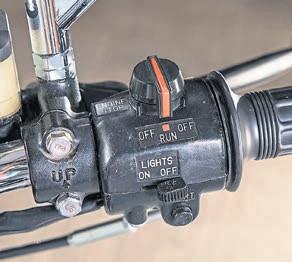
4. EXHAUST SYSTEM
OEM system now mega-rare. After-market offerings may require rejetting.
Lots of noisy cheap ones about that do little for performance.
5. GEARS
A robust unit but occasionally third gear drive can die when fifth output gear breaks. Bikes used especially hard may jump out of first. Loss of drive in any one gear

normally requires replacement of both cogs. Seek expert advice as meshing tolerances change circa 1977.
6. BRAKES Early twin-piston callipers excellent for the period, later sliding single piston units still okay. Proper servicing and cleaning gets the best result out of both. Modern pad materials also improve braking.
7. TRIM Seat pans can rot, mudguards always do, and rear grab rails are hard to find. The Fizzy cult means indicators may be hard to find or pattern ones have been used on XS1/2; TX variant runs RD type.
8. ELECTRICS Generally reliable but rotors can die with age; ensure brushes are in good condition. Coils can be weak and all variants benefit from electronic ignition.
focused on top-end performance. It’s possible to use 256, 447 or 533 components in any of the models but cranks, cams, con rods and pistons must all be swapped over en masse or chaos will ensue!
The latter half of the 1970s saw Yamaha offer the SE or Factory Custom range which featured a chunky 16in rear wheel, custom seat, high bars and more chrome. 1979 was the last year of the standard models (latterly referred to as Roadsters) before production swapped over entirely to the custom models. These models also saw the adoption of TCI (Transistor Controlled Ignition) units which did away with the points and mechanical advance retard mechanism.
The robust nature of the motor is legendary and some argue the bike may have originally been designed to run as a 750. Certainly it was no problem for the factory to convert the motor to 750ccs to enable Kenny Roberts to compete again on Harleys on America’s dirt track ovals. The motors took the upgrade without issue. Latterly, in a search for more
power, it was found that modified Suzuki SP370 trail bike pistons could be utilised to bring the engine capacity up to 840ccs. Again the motor coped without problems and the only issue was getting the standard clutch to handle the increased torque. Another development, achieved by fitting offset pins to the pressed up crankshaft, saw capacities up to or over one litre… and the basic design still coped well. Given that level of reassurance, a running example of Yamaha’s seminal twin is unlikely to give you much to worry about in the reliability stakes.
Yamaha axed the XS650 after the 1985 model year even when, allegedly, its dealer network was still full of orders. The story goes that with the imminent launch of the all-new XJ650 four the factory didn’t want two 650s on the books. It would take until 1989 before Yamaha built another big four-stroke twin, the XTZ750, but from there on the factory has majored on them. Think TRX850, TDM 900, MT-07 and hugely successful T7 series. Now most manufacturers have a big twin in their range but it was Yamaha that got the ball rolling again!

 Lineage and Legacy
Lineage and Legacy
Reliability has to be the Number
One reason for owning any XS650. Only abysmal maintenance or crass stupidity will wreck an engine – yes, they are that good. Spares support is amazing from a handful of international specialists, plus there’s a huge fan base online offering advice and support. There’s a range of modern upgrades that bring that amazing motor into the 21st Century and even engine conversions that deliver a cross-plane crank. Regardless of whether your XS650 is standard or modified, the one thing it will always have is character – and in spades – which something many Japanese machines are said to lack.
Estimates suggest in excess (sic) of 185,000 XS650s of various types were built over the 16-year model run, which gives you some idea of its popularity. Almost four decades after the last ones were made it’s still possible to buy most parts you are likely to need. The Yamaha XS650 spares situation is up there with classic Triumphs, which says a lot about the endearing nature of big twins.


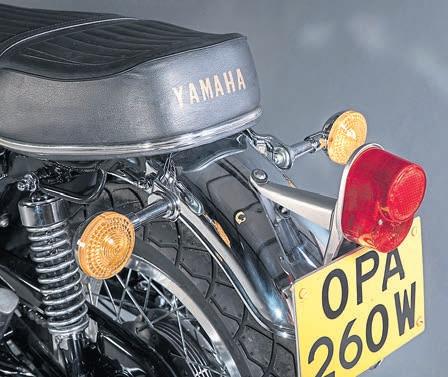


If you’re looking for the early XS-1 or XS-2 our £5k budget will only get you a non-running project or a shabbier ride. The slightly later TX650s normally come in under our self-set limit and are well worth a look. From 1976 on you should be able to find a ‘Roadster’ for less than £5000 even when they are advertised at £6000! Why? Because the later XS650s are still amazingly good value for money yet people aren’t perpetually clamouring for them. The bargain
buys have to be the so-called ‘Factory Custom’ models which represent one of the earliest attempts at a Metric Cruiser. Compared to the faux Japanese choppers on sale now, these Yamahas are very mild in terms of styling. A grand will buy you a project example and if you pay much more than £3000 you’re paying OTT. Final word of caution: the big twins attract customisers and modifiers of all types but don’t be suckered into someone else’s idea of how a bike should look – their ideal probably isn’t yours!
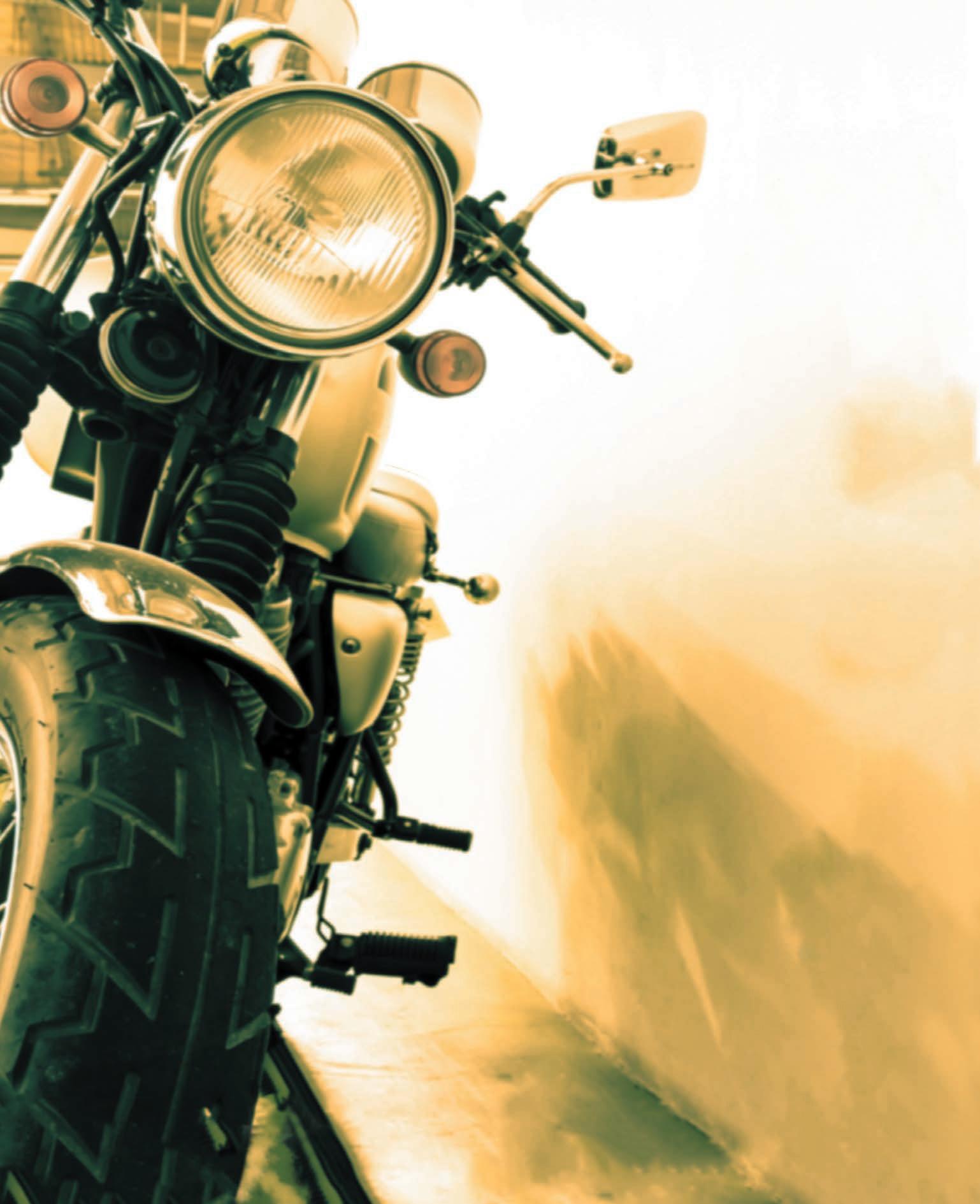





















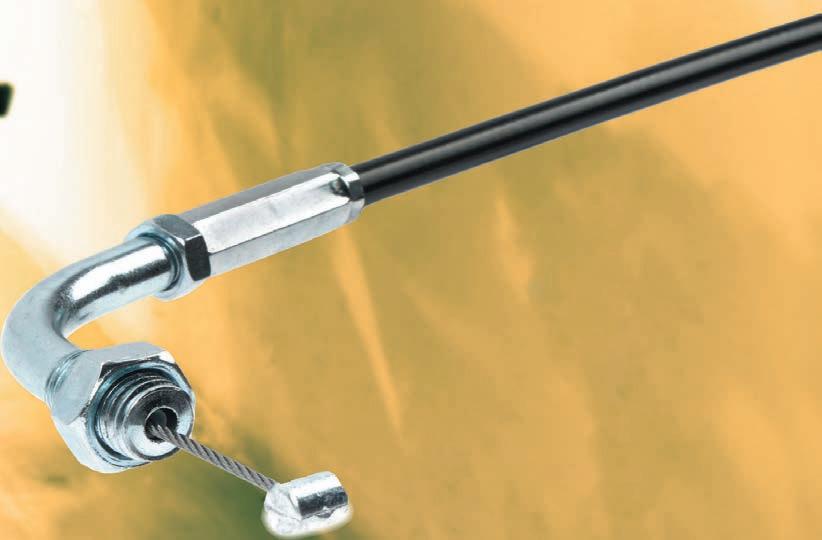
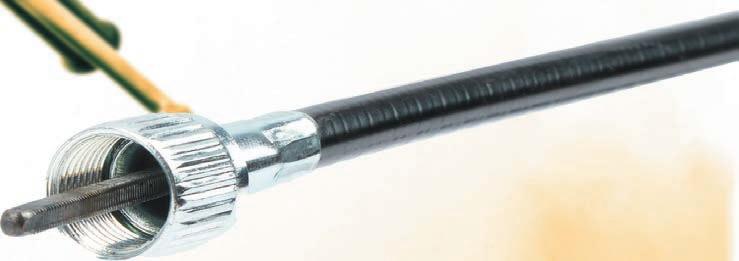
















Is Honda’s C90 the world’s greatest motorcycle?
‘The World’s Greatest Motorcycle’?
An outrageous boast for something under 100cc that barely tops 50mph?
Consider this. Manufactured since 1958, in 2018 the 100 MILLIONTH bike rolled out of the factory. It is still being made today (in fewer locations admittedly, now ‘just’ 15 plants worldwide) wherever there is need for a mechanically simple machine that is easy to self-service, and runs on a whiff of petrol creating cheap but robust urban transport for the masses.
Given the energy crisis and escalating bills in the UK, is it time for the C90 to make a comeback? By the way, the C90 is appreciating in value! Oh, and let’s not forget that the humble Cub spawned one of the most famous advertising slogans of all time: ‘You meet the nicest people on a Honda’. More on that later.
The story begins in 1956 when Soichiro Honda and Takeo Fujisawa visited Germany and Italy. Soichiro was the engineer and production leader, whose focus was on winning the Isle of Man TT to push the company on to the world stage. Takeo was the money man, who insisted they needed a small-capacity bike that would appeal to both developed and

developing countries; technologically simple – essential if it was to sell in areas without access to advanced tools or spares – and robust. The scooter model they observed in Italy was close, but Takeo felt the wheels would not survive rough terrains.
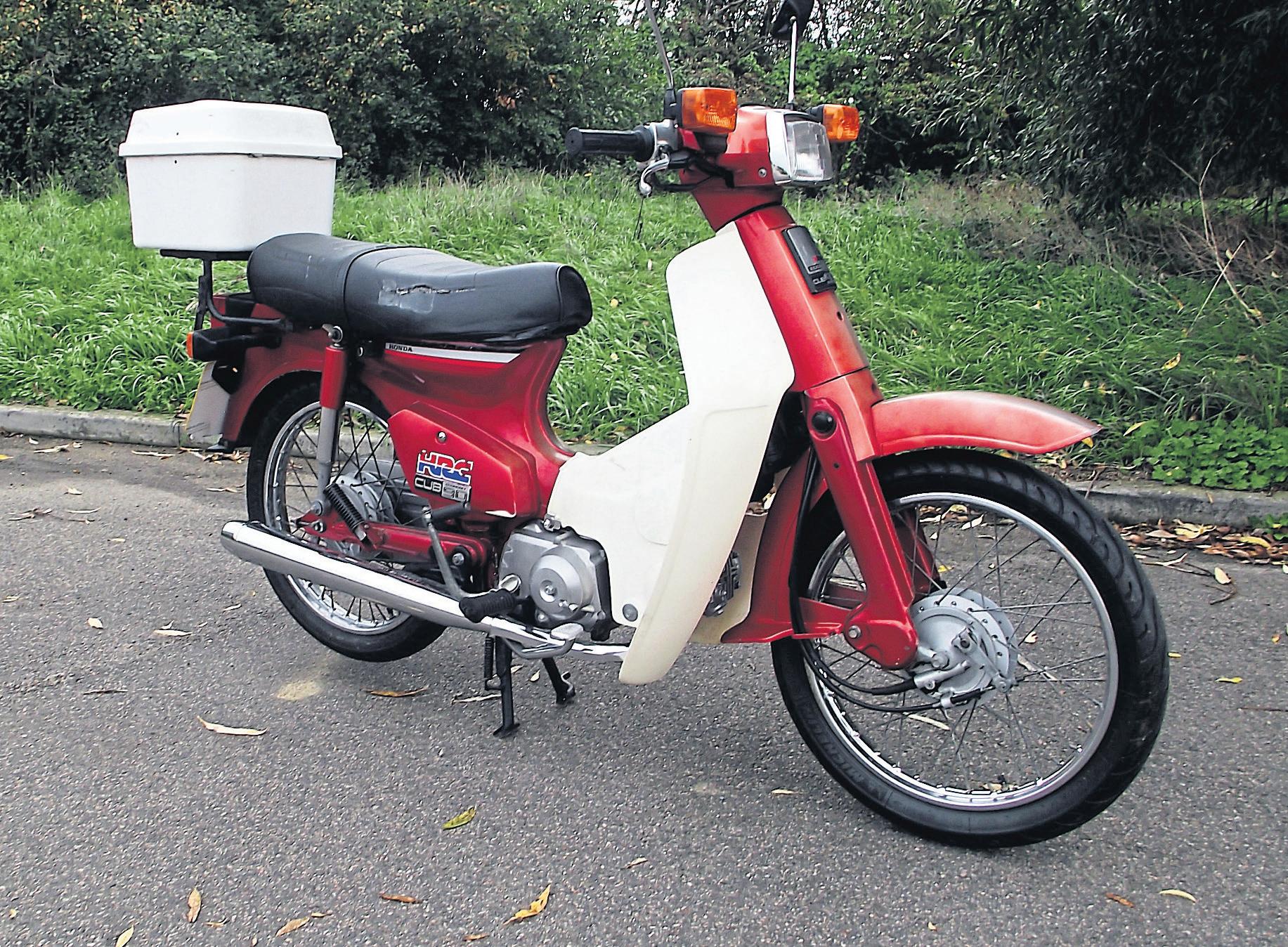
Interest whetted, on returning to Japan Soichiro began designing the new bike. After a year the prototype was revealed (what came to be the C50). To keep costs and weight down, Honda pioneered development of fibreglass reinforced plastic, which formed the fairing.

Opinions vary on who said this to whom, but (Soba) Noodles were the masterstroke that launched the Cub into the sales stratosphere. The story goes that one said to the other: “This is a bike that a Soba Noodle delivery man can ride with one hand and a stack of noodle trays balanced on his shoulder. I don't know how many noodle shops there are in Japan, but I bet you that every shop will want one for deliveries.”
Honda’s first great campaign for the Cub was born. Featuring a fictional boy who journeys from the countryside to sell Soba in the big city, he raves to his mother how his Cub
is so fast the noodles don’t get soggy, finishing with the slogan, “Soba-mo genki-da, Okkasan!” (The Soba is good too, Mum!) It was a spectacular success. After the campaign launch, Honda received over 4,000 orders for Cubs from Soba Noodle shops and other restaurants.
Manufacture was on a scale never before seen. Thirty-thousand bikes were produced PER MONTH – half as much again as the entire two-wheel market in Japan – in a massive new facility built at Suzuka, modelled on the Volkswagen Beetle facility. Introducing a two-shift system, manufacture leapt to 50,000. This massive leap allowed economies of scale, with an estimated 18% of unit cost being recouped by building at this level.
Over the next decade, Honda opened in America, Germany, Belgium, the UK and France. Another masterstroke was the American advertising campaign, ‘You Meet The Nicest People On A Honda’. Running for 12 years, it remains one of the most famous campaigns of all time and to this day is still used as an educational example of mass marketing.
During this period the bike evolved
WORDS: Bob Pickett PHOTOS: Mortons Archiveas well. But in 1967 the C90 Super Cub we know today debuted. Featuring an 89.5cc engine housed in a pressed steel underbone frame, the C90 Super Cub featured a 3-speed semiautomatic box. Power was 5.6kW (7.5bhp) @ 9,500 rpm with torque of 0.67kg.m (6.6Nm; 4.8lb-ft) @ 6000rpm. Over the decades a series of minor tweaks have been made, but the C90 is essentially the same bike as ever.
Despite not being sold new in the UK for a couple of decades, they’re still widely available. A quick search of a single auto trading site sourced
Year: 1967 onwards
Engine: 89.5cc air-cooled OHC single cylinder
Bore and Stroke: 50 x 45.6mm
Compression Ratio: 8:2:1
Power: 5.6kW/7.5bhp @ 9,500rpm

Torque: 0.67kg m (6.6Nm; 4.8lb-ft) @
6000rpm
Ignition: Magneto (electric and kick start)
Clutch: Wet, semi-automatic
Frame: Pressed Steel underbone
Transmission: 3-speed, chain
Suspension: Front: leading link 56mm (2.2in) travel, Rear: swingarm 61mm (2.4in) travel
Brakes: 110mm expanding drum, both front and rear

Length: 1829mm/72 inches
Wheelbase: 1185mm/46.7 inches
Seat Height: 760mm/29.9 inches


Dry Weight: 85kg/187lb
What’s it like to own and run one? I sat down with owner Les Bacon to find out what you need to know and look out for. Les uses a C90 for his daily commute to East London Kawasaki.
“If you’re looking to buy one, look out for rust, that is the major weakness. The other issue is, because of the narrow front, it wasn’t unusual for the inner tube to pinch and burst –it was common for owners to ride carrying a spare!

“Clutches can slip, but that’s an easy fix. And the chain is fully enclosed so neglect isn’t unusual. That said, it will handle any amount of abuse and just keep going.
“Other than that, they’re cheap to run. Tax is just £22, servicing is cheap, spares are easily available, and they’ll do 100-150 miles to a gallon!”
Amazingly, in my 25-plus years of biking, I had never ridden a C90, though I did meet a couple from Denmark who used to ride from there to a music festival in Oxfordshire each year, and a friend knew a Norwegian who rode one to the Isle of Man from Oslo (I’m not sure if this speaks volumes about the bike or Scandinavian riders!). That was about to change, as Les offered me the chance to take his Cub for a spin.
made a big difference (genuine stopping power there), and a Cub oddity occurred. It’s truly strange to brake and have the front rise!
After a while wobbling round local side roads, I decided to take life in hand and venture out to bigger, faster climes. Get it rolling properly and it’s stable – the 17-inch wheels help here. It’s so narrow and light, with a generous opposite lock it’ll turn on a sixpence. But it did take me time to develop confidence into corners (which I think was more about the braking; get your braking out of the way VERY early so you can bimble round the bend).
half-a-dozen, ranging from a 1991 model with 35,850 miles on the clock for £1,995 to a 1990 one with an amazingly low 1,540 miles logged at £3,499.
And they’re still popping up at dealers! I found a 2002 bike with 6,290 miles for £2,995 (and a 1983 C70 with 8,255 miles clocked at £1,495).
If you’ve never seen a Cub up close, it’s a culture shock. It’s a miniscule museum piece. To start, key in the ignition, spot of choke, open the throttle a bit and with a smooth kick on the right side starter pedal (there are ones with electric start) it burbles into life. No side stand, so you have to take it off the centre stand, sling a leg over/squeeze foot awkwardly between fairing and seat and clunk into gear. It’s a semi-automatic clutch so no lever. Press the heel/toe pedal forward (all three gears are forward; it’s a bit odd but you soon get used to it – oh, if you roll the Cub backwards the gears disengage), open the throttle and away you go.
First impression? My actual thoughts aren’t printable in a family-friendly title! Burbling slowly up the road, I decided to test the brakes. Used to modern bikes, I applied the front only and… nothing happened. Adding the rear
What was a surprise, was increasing pace a bit. At 30mph it’s pleasant. The basic suspension is quite soft; the Cub soaks up most lumps and bumps without fuss. At 40 it was genuinely enjoyable with the 89.5cc single humming away like a sewing machine. Ride a C90 Cub and get used to being looked at and/or people coming over for a chat. When I stopped for photos, I’d just hauled it on to the centre stand (easy-peasy as it’s so light) and got the camera out, when a PCSO on a threewheeler rode over to see if I was okay. Turned out he’d owned one and sang it’s praises! Other things to know: The clock is simple (speedo, neutral light, indicator light). Mirrors are next-to-useless. Honda’s history with oddly-placed indicator switches began with the Cub with an up/down switch next to the throttle. As for the light, I’d suggest wearing a miner’s headband, it’s so weak. As I said, the threespeed centrifugally-clutched box is strange, but don’t worry if you don’t go to neutral at the lights, it’ll pull away in third and impossible to stall.
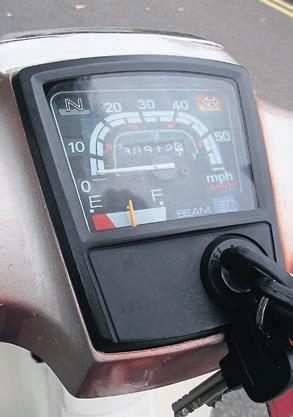
I’ll be honest, the C90 Cub isn’t for me. But if you want something for local pottering that’ll cost you next to nothing to run then the Cub’s a left-field choice. Just get that braking business out of the way very early.


The ARC Vector was unveiled at EICMA back in 2018, dazzling the motorcycling world with its dramatic hub-centre steering, claimed ranged of 271 miles, and recharge time of just 40 minutes. Most thought the ARC would simply by a concept, however, we’ve actually ridden it.
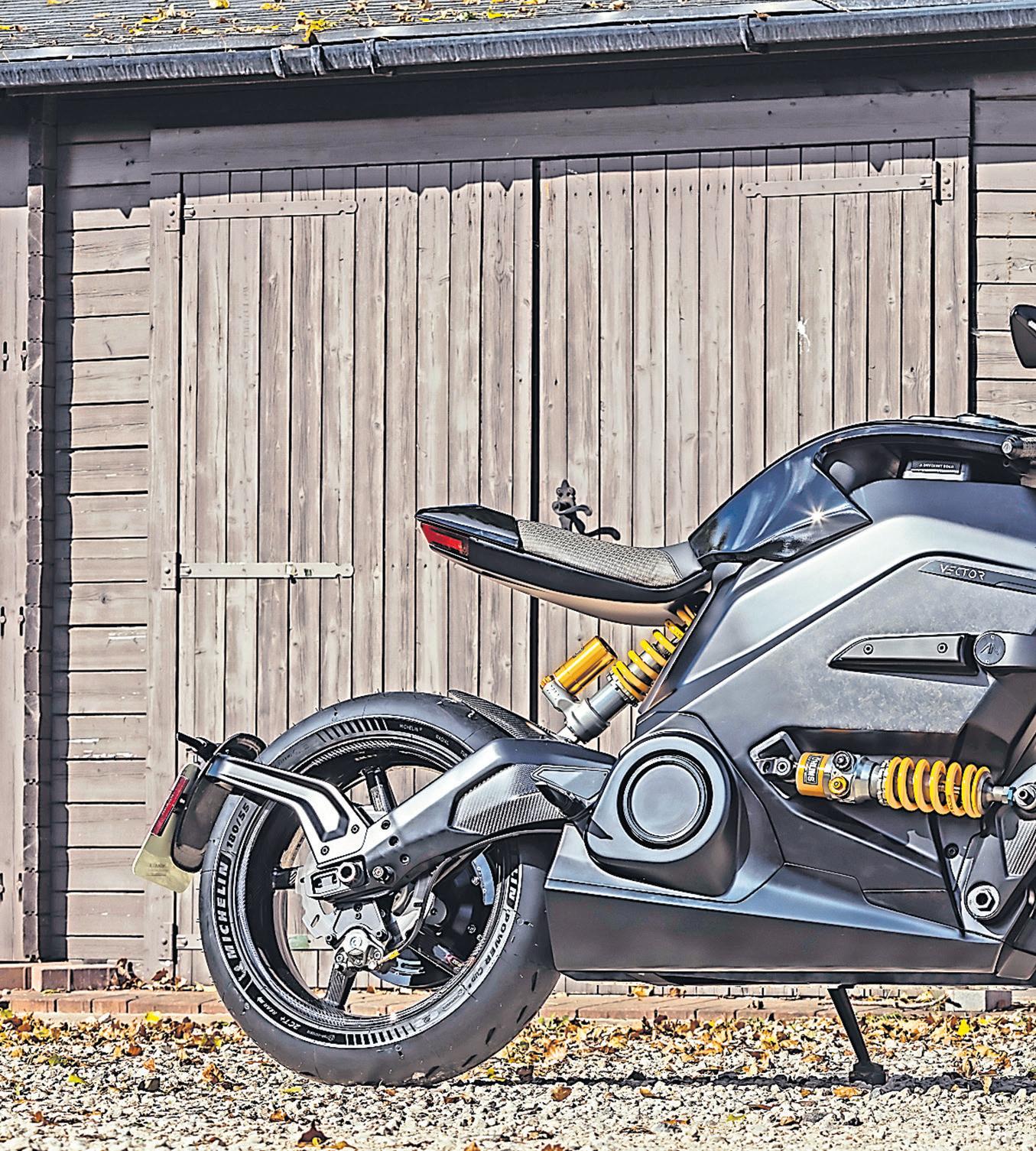
ARC motorcycles is the innovation of British engineer Mark Truman, who set out to create something special: the world’s most advanced electric motorcycle. He started with a blank piece of paper, then let his imagination and brilliance run wild, free of the constrictions of conventional petrol bikes. With the first tailored and British-made Vectors now reaching customers in the USA, we took one of the very first £90,000 bikes to leave the factory for a quick spin close to ARC headquarters near Coventry in England.
The ARC is distinctive and isn’t based on anything else in the market. There is no conventional frame; the chassis is the housing for the battery and motor, similar to Ducati’s Panigale and new MotoE race bike, but this was designed back in 2018. Hub-centre steering allows a very steep head angle of 20 degrees compared to a normal sports bike’s 24 to 25 degrees. The pivot point of the front shock is below the front wheel spindle, which, unlike other hub steering models, allows the front to dive slightly like a conventional telescopic fork. The hub steering also allows the ARC to run a light spring at the front, which can cope with the weight (240kg) better than conventional forks.
In cooperation, rear and front arms are carbon fibre, as are the wheels (by BST). There are Brembo Stylema brakes up front, a full carbon seat unit, keyless ignition (via a wrist strap key like a watch) and belt drive. A digital dash on top of the dummy fuel tank houses the charging ports behind a fake fuel cap.
Told you this was different, very different.
The ARC’s permanent rare earth magnet, AC motor is skilfully hidden by a blank belly pan, which houses a channel
that directs cool air to the small, rear-facing radiator, which cools both the motor and inverter. The motor produces a peak of 173Nm of torque, and 87kw/117bhp of power, directed to the back wheel via a belt drive, which requires minimum maintenance.
The battery has a capacity of 16.8kWh (using Samsung Battery Cells) and is housed in a monocoque carbon shell, to which the front and rear bespoke carbon suspension is bolted. There is no conventional frame, and all this was designed back in 2017/18, while Ducati is using a similar concept on its MotoE bike for next year. The homologated official quoted range is 271 miles on a single charge, but Mark and the British team reveal that, realistically, around 200 miles could be expected during regular riding, and 120 miles during aggressive riding or with a motorway stint.
During testing on track, with former MotoGP racer James Ellison onboard who worked as a development rider, 60 miles was the worst recorded result. That might not sound impressive, but it is. A normal ride on track should see 75-90 miles at worse.
Top speed is limited to 120mph, which on some tracks will be a hindrance. But ARC quotes a 0-62mph time of 3.1 seconds – that is quick. Recharge time from 0% to 90% is only 40 minutes on a Type 2 rapid DC fast charger. (This is the only way to charge the ARC; there is no home three-pin system.) In theory, you could ride hard on track, charge at lunch and ride again in the afternoon. For the road, the ARC is fully road legal and meets Euro5, which isn’t as strict for electric-powered vehicles as there are no noise or emission targets to meet.
It’s special I’m still getting accustomed with riding powerful electric superbikes. Today, that initial apprehension is magnified by the
value and uniqueness of the ARC. I’m the very first person outside the company and test team to be allowed on the bike, and there is only one in existence. To add to my concerns, the TC and ABS have not yet been fitted, as they are in final development in partnership with Continental.
There are no gears, of course, and the instant response of direct torque always takes a little while to get used to. Unusually, the ARC also runs a handlebar-mounted back brake, like a scooter, and very little engine braking.
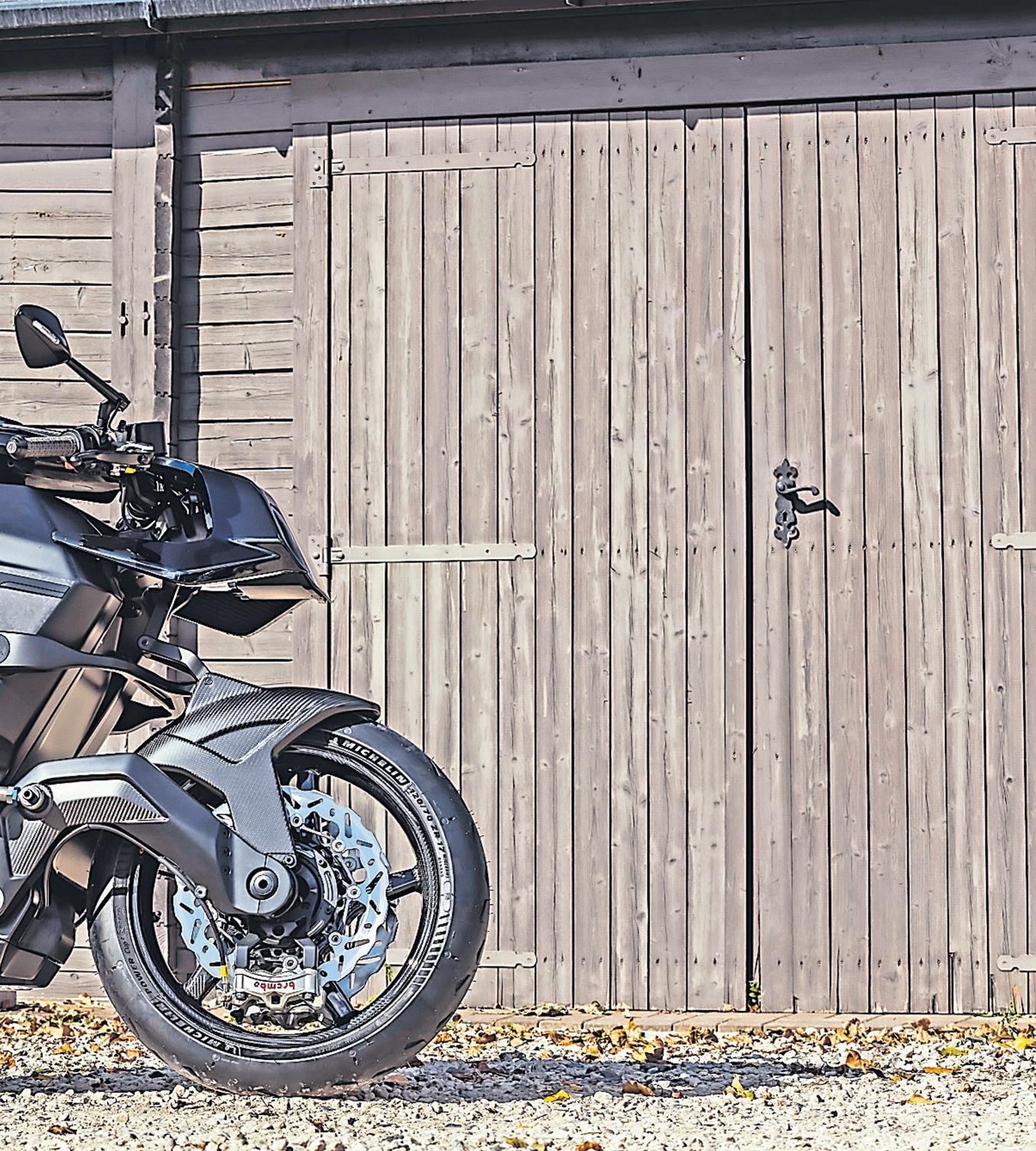
Engine reaction on small throttle openings is a little abrupt compared to a petrol-powered superbike (even in the lower power Eco mode with 70% torque).
The standard bike has three rider modes, which reduce power delivery and torque: Rain 40%, Eco 70%, Road 100%. Once the Human Machine Interface (HMI) is completed there will be a further three modes, Urban, Sport and Euphoric, which will interact with the helmet and clothing.
Unlike a petrol bike, you don’t have to wait for peak revs; acceleration is rapid. It’s hard not to stop your left foot from hunting for a gear lever as you leave the lights with superbike performance. From a standstill or from 30, 50, 60mph, just twist and go. Rapidly. In wet or cold conditions, traction control will be needed. I could feel the front wheel go light on occasion over crests.
So much torque makes overtaking unproblematic, with no changing down gears to access peak torque necessary. You don’t have to look down at the revs or double-check the gear indicator, just twist and go. It’s a bizarre sensation passing cars with such a consummate lack of effort and no longer accompanied by an exhaust tone.
The British team has deliberately dialled-in minimal engine braking, meaning there is very little re-gen. This gives it something of a twostroke feel that helps you roll and flow into corners.
The pivot point of the front shock is below the front wheel spindle, which allows the front to dive slightly like a conventional telescopic fork. The hub steering also allows the ARC to run a light spring at the front, which can cope with the weight (240kg) better than conventional forks

Hub-centre steering is nothing new, and is still used by Bimota on the Tesi H2, while Yamaha famously had a crack at it with its GTS 1000 in 1993. But the ARC system is distinctive from most previous designs. The key element is the pivot point of the front swing-arm, which is below the front wheel spindle, meaning some weight can be transferred to the front end, allowing the front to dive reassuringly under braking, adding an almost conventional feel missing on most hub steering bikes. The other advantage is that the ARC can run a steep steering head angle of just 20 degrees (most sports bikes have 24-25-degree head angles). The ARC system also allows a lighter spring for the Öhlins front shock.
However, it’s not all good news. There are disadvantages, and cost is a clear one. Development was vast and expensive. Then there is the actual cost of production: the front swing-arm is carbon fibre while the front mudguard, which is a structural component, is also one complete carbon unit. These items are bespoke, not off the shelf, all designed by the British team. The other main disadvantage is a large turning circle that makes the Vector a touch awkward in town.
But ARC’s development team
knew an electric superbike would be heavy and that a hub-centre steering system, which separates the braking, steering and suspension functions would, dynamically, manage that weight better than traditional forks – and allow a steep and sporty steering head angle. They were also unimpeded by normal design limitations: without a radiator, waterpipes, front exhaust routing and engine heat to worry about, the designers and engineers had a relatively free run at the project.
At first, the 240kg superbike does feel heavy, especially when you’re moving it around and throwing a leg over the 825mm carbon seat. Other electric bikes I’ve tested recently, which are considerably heavier, have a reverse or crawler gear, which the ARC doesn’t. I had to jump off to push backward, rather than paddle backward.

But once the carbon BST wheels are turning that weight diminishes rapidly. That steep rake angle makes the ARC feel lighter than it actually is, and it took a few miles to recalibrate as I was continuously turning too quickly and hitting the apex early, then picking up the bike and having a second stab at it. But the more I rode the ARC the more we connected, and I found myself using less input at the bars and pegs to make it turn.
The Vector steers more rapidly than any other electric superbike I’ve ridden, but it’s far from nervous. With suspension and braking forces separated and a relatively light spring controlling the ride, you can feel the front end reacting to bumps and imperfections – the ride is almost plush – but there isn’t a huge amount of drive or weight transfer either. The rear suspension uses a directly mounted Öhlins unit, which is on the hard side. You really feel this at low speeds and over imperfections around town, but once up to speed, it comes into its own.
Riding the ARC is a little like riding a proper race bike on the road. Generally, race bikes have less squat and suspension movement than road bikes and that’s the same with the Vector. While that doesn’t feel great at slow speed or over large bumps and road imperfections, once you’re up to pace and putting forces through the suspension, it moves into its design window and begins to work appropriately. The Vector doesn’t want to be ridden leisurely; above 40-50mph is when the suspension works. Long, flowing corners are its natural hunting ground. Once the bike and rider are dialled in, it’s a satisfying bike to ride briskly.
ARC Vector
Price: from £90,000
Engine: Permanent Rare Earth Magnet AC
Motor: 16.8 kWh
Power: 87kW/117hp (claimed)
Torque: 173Nm/128lb-ft (claimed)
Frame: Carbon Monocoque battery is the frame
Wheelbase: 1450mm
Brakes: (F) 2x320mm discs, Brembo Stylema 4-piston callipers, (R) 240mm disc, Brembo 2-piston calliper, std ABS
Transmission: Automatic belt drive
Suspension: (F) Hub-centre steering, carbon fibre swing-arm, Öhlins ILX56 single shock, 150mm wheel travel, (R) Öhlins TTX56 single shock, 110mm wheel travel
Wheels/tyres: Pirelli Diablo Rosso 4 Corsa, (F) 120/70ZR17, (R) 180/55ZR17
Seat height: 780mm
Range: Claimed city range of 271miles/436km. (ARC admits that in the real world it’s more like 200miles/320km or 120miles/193km high speed)
Weight: 240kg
Warranty: Three years
Service intervals: First service 12 months or 1000 miles, then 2 years or every 3000 miles
Contact: www.arcvehicle.com
Each bike is built at the company’s HQ and tailored to the rider’s size and weight. Potential owners are invited to the factory for a fitting. Pegs can be moved and fitted to match the rider, like a made-to-measure suit
I’d avoid town, however; the rear is a little harsh and the steering lock is limited. Add a tall-ish seat and that instant torque as you crack open the throttle, and I can see most owners heading for the countryside or track immediately. However, because each bike is bespoke, suspension and power settings can be tailored to match the customer’s requests. Theoretically, a wealthy owner who wishes to ride their ARC around Monaco rather than Brands Hatch can have it tweaked to suit. The set up can also be matched to the rider’s weight and style (track/road).
Stopping the Vector’s 240kg is down to two Brembo Stylema Monobloc callipers gripping 320mm discs. The rear is also a Brembo item, this time a 240mm disc. Our test bike didn’t have ABS fitted but customers’ bikes will have conventional ABS, not lean sensitive. It will also be possible to deactivate the ABS completely, should you wish to in Sports mode on the top spec AE model.
Again, decelerating takes a little getting used to, especially with so little engine braking. The front dives a little; unlike some HCS systems you can feel the front tyre loading as weight transfers forward, but not as much as conventional forks. Meanwhile, the rear brake lever on
the handlebar like a scooter is very effective. Again ABS will be required, as it’s easy to lock the rear from the bar lever.
Around town, I don’t think I used the front brake at all as the rear set up is so effective. It is only out of town, when you’re using all that torque and having fun, do you start to brake ‘normally’ using mainly the front. When you brake heavily, that positive, but subtle, suspension movement helps you feel the front tyre’s contact patch. There’s none of the detached sensation you can experience on bikes with odd front ends. I’d really like to try the ARC on track, to push the boundaries, brake later to the apex, but this was an early road test only, on an expensive first model.
While the overall design and spec – Brembo brakes, Öhlins suspension, BST wheels – are fixed, each Vector is customised to the rider and their demands. Colours, finish, the position of the pegs… Almost everything can be matched to the owner’s personal taste. Some customers have requested black Öhlins springs instead of yellow; some have even gone for a wood-like finish on the top section – there are few limits. Customers can visit the ARC HQ or meet online to discuss materials, design, etc.
Cruise control is standard and therefore as long as you plan your road trip with a DC fast charger along the way, you could cover some decent miles on the ARC. The range and battery usage are displayed on the dash, which is on top of the dummy fuel tank. This also shows speed, riding mode, etc. Disregarding the price for a moment, this is my only real criticism, because it’s hard to see, especially when the sunlight is directly behind you. However, in the future, all the information you’ll need should be in the head-up display in the ARC Zenith helmet.
Imagine trying to design and produce your own bike from scratch, and at the same time pushing the boundaries of design and tech. The ARC Vector is a gigantic project, one that started from nothing and has become a motorcycle that is distinctive, spectacular and very special. Its very existence is a huge achievement, which must be applauded.



The small British team’s meticulous development of the HCS front end has delivered a system that allows some dive, has quick steering and gives more feedback than other HCS bikes. They’ve built a bike that uses the main battery as its chassis (before Ducati), with both carbon swing-arm bolting directly to it and a carbon mudguard that is a structural part of the bike. There’s also the forthcoming HMI interaction with bespoke futuristic jacket and helmet. No longer hindered by the conventional architecture of petrol bikes, they have truly moved the dial in terms of design and engineering.
Not only is it uniquely designed, but also it works as a motorcycle. It feels misleadingly light once on the move, turns well, gives feedback, has excellent brakes – this is one quick electric superbike. Our test machine was a little firm and the initial throttle response a tad demanding, but most faults can be rectified before delivery. The clocks are a little disappointing, and you obviously can’t ignore the jaw-dropping price.
I’m assuming for actual customers price isn’t an issue, like when buying a Ferrari or Bugatti. Those privileged few who manage to grab an ARC Vector will be buying something extraordinary, not only in looks but also in design and performance. When you stand back and look at what ARC has achieved, it’s impressive, which is why the orders are already coming in.
What makes this bike even more unique is the Human Machine Interface (HMI). This is a direct connection between the bike and the rider.

A Zenith helmet will feature a head-up display (HUD) just like a fighter pilot’s. The helmet will also have an integrated rear-facing camera, which will automatically highlight anything detected in the blind spot via the HUD. Rider modes will have the option to be voice-activated from the Wi-Fi helmet. Additionally, ARC is working on the Origin Jacket, which is part of the HMI experience. For example, in Urban mode

the jacket will alert the rider to dangers; in Sports mode it will give the rider feedback on their riding, taking information from the IMU or transmitting how much TC is being activated. Euphoric Mode will let you play music through the haptics – all currently in development but close to final production. Some will hate this movement in tech between the rider and bike, but you must admit it’s clever. Again, the disadvantage is price. The top-spec model, with specialist machined parts and programmed for HMI will set you back £110,000. Yes, we are talking Supercar money.

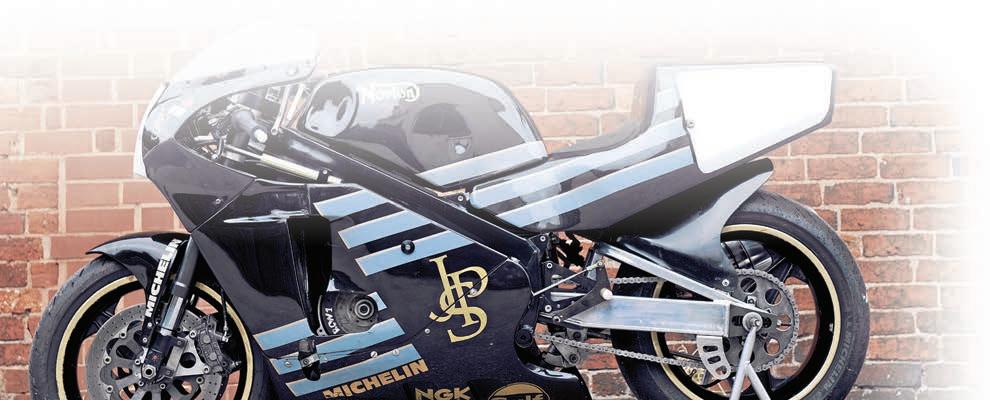
























Sinnis has made a serious step up with its latest commuter scooter. It’s better built, better specced and better looking than anything it’s done before. But is it enough to tempt people away from the more established competition? We spent a couple of weeks with the Hero-X 125 to find out.
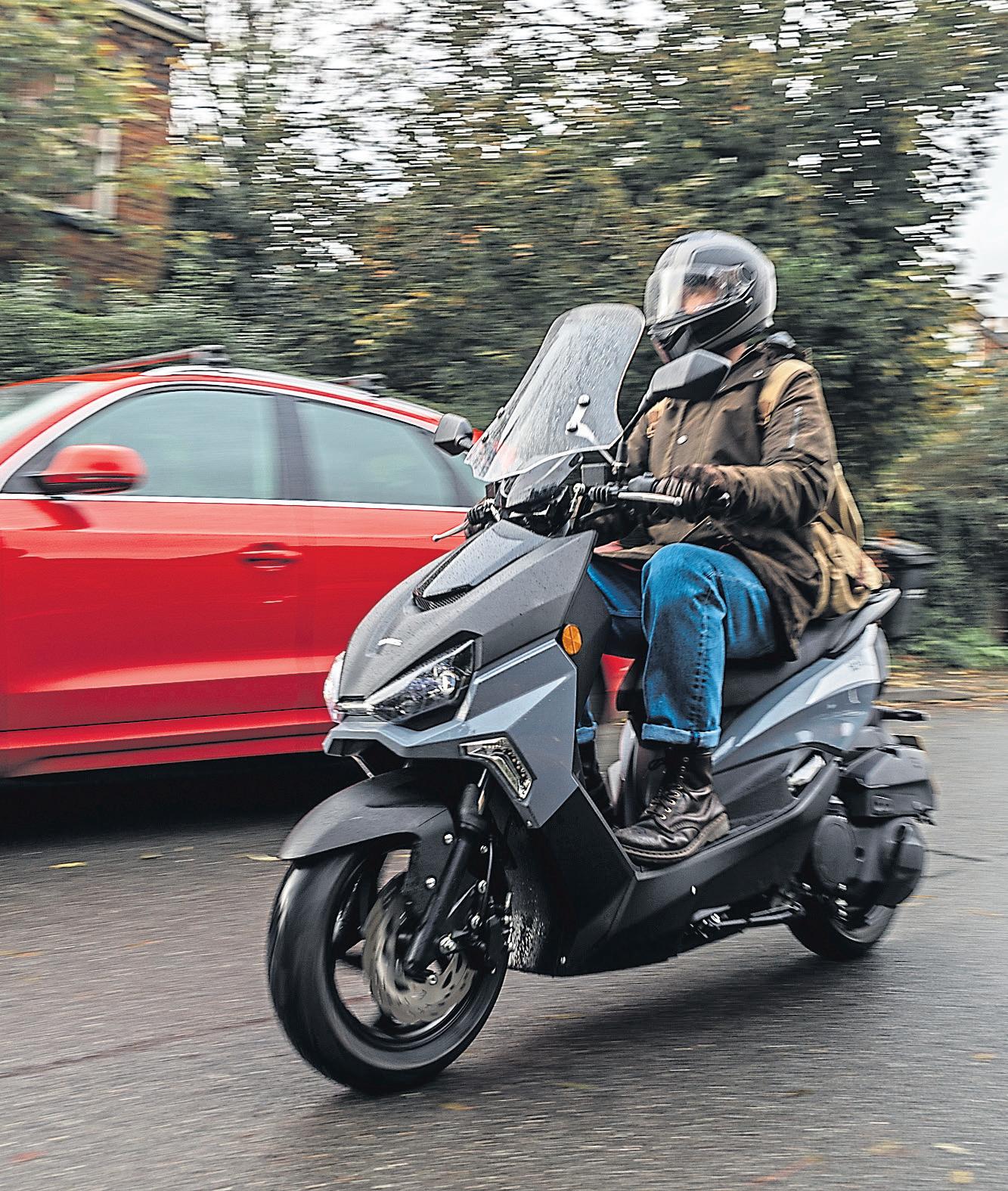
WORDS: Ross Mowbray
PHOTOS: Gary Chapman
I’ve ridden a lot of Sinnis motorcycles and scooters over the past seven or so years. They’ve always offered exceptional value for money, neatly packaging reasonable levels of performance and build quality into desirable packages for punters who don’t need the latest and greatest technology and loads of power to get a kick out of riding on two wheels. They’ve been getting better and better at every turn, and despite a reluctance
by many to buy Chinese metal, Sinnis continues to sell plenty.
A couple of months ago we spent a bit of time getting to know Sinnis’ Connect. It proved plenty capable, offering a good dose of practical performance in a tried-and-tested commuter-oriented big wheel scooter format. It didn’t blow us away, but when you consider its very competitive £2299 price tag, you can forgive a few small niggles.

This Hero-X is a different proposition entirely. Firstly, it’s £600 more expensive than the Connect

– coming in at £2899 (plus the on-theroad charges) – which is enough to put it in a different class altogether. It’s a sporty little number, punching well above its weight, that has its sights set on some heavy hitters from the likes of Honda and Yamaha (at a significantly lower cost, I might add – it’s at least £500 cheaper than the PCX125 and the NMAX 125). The build quality seems good; the level of finish is spot on; and there’s even a two-year warranty and 12 months’ breakdown recovery thrown in for your money. Surely that’s enough to tempt a few sceptics to take a good, hard look at the latest Sinnis…? But away from the facts, figures and first impressions, how does it actually hold up on the road? We took to the streets to find out.
Away from its funky looks, the headline feature is the scooter’s new liquid-cooled 125cc engine. When we say new, let’s be clear that there’s nothing particularly innovative about the motor – it’s your usual four-stroke single – but it is new for Sinnis. With 11.4bhp on tap, you’re not going to be setting any land speed records, but it’s nippy around town and has just about enough in the bag to hold its own out in the open. It’ll get up past 55mph with a bit of coaxing, which is fairly respectable, but any particularly fast stretches of road will soon see traffic held up behind.

I tended to keep off the big roads, finding myself frequently bobbing and weaving my way across country, careening down back roads at much less strained speeds of between 45 and 50mph, while making full use of the Hero-X’s agile handling with a smile across my face.
It’s a relatively hefty 146kg, which combines with the reasonably capable suspension to help it feel planted in the turns (and roundabouts), without being so heavy that it’s a pain to shift around at lower speeds. It’s probably at its happiest flicking through town traffic, but at no point did it get out
Price: £2899
Engine: 125cc single-cylinder, four stroke
Power: 11.4bhp (8.5KW) @ 7800rpm
Torque: 8lb-ft (8.5Nm) @ 7500rpm
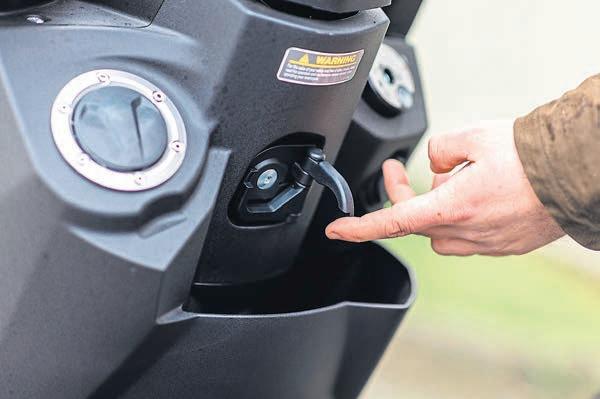
Transmission: Variable belt drive
Frame: Steel spine frame
Suspension: (F) telescopic fork (R) single shock absorber mounted directly
Brakes: (F) single disc, three-piston calliper (R) single disc, Single piston calliper
Wheels/tyres: (F) 120/70-13 (R) 130/70-13
Seat height: 805mm
Weight: 146kg
Average fuel consumption: 95mpg tested
Fuel tank: 7 litres
Warranty: Two years parts, one year’s labour and breakdown recovery
Contact: www.sinnismotorcycles.com
of shape, even when being pushed hard in less-than-ideal conditions on less-than-ideal roads. There’s not even much dive under braking, which is a common foible of more ‘budget’ machines.
Speaking of braking, it stops perfectly well. As is now common on many 50cc and 125cc machines, the front and rear brakes are linked. What that means is that when you yank on the right-hand level, you’ll enact two of the three pistons in the front brake, while grabbing the left-hand level forces the back brake and the third piston in the front brake into action. There’s plenty of power on hand to haul the scooter to a halt quickly and safely, though I found myself often using both front and rear simultaneously, as they provided the most power and most control (though the rear’s perfectly up to the job of tightening turns in the road and applying a bit of finesse when filtering). It’s also worth mentioning that because of the linked set up, there’s no ABS, but even on greasy roads under pressure I didn’t suffer any slips or slides.

It’s a comfortable place to be, too. It might look compact from afar, and although you shouldn’t expect the Hero-X to have bags of space, I
found it deceptively roomy – even for a plus six-footer like me. The seat’s well padded; the mirrors give a good (mostly smooth and interrupted) view of the road behind; the screen offers a decent level of protection; the bars are plenty wide enough; and there’s a clear and easy-to-read dash providing a basic array of information.
One small disappointment was the amount of space under the seat. The ability to tuck your lid out of sight on arrival at your destination is one of the great things about scooters, but sadly I was unable to stash my Shark Spartan securely. That said, I’m sure it’d swallow up a jet or open face with ease.
There’s a lot to like about the Sinnis Hero-X. It’s a good chunk of cash cheaper than the competition. The motor is quiet, smooth and capable enough for most scenarios. It handles well, stops sharply, and it’ll manage nearly 100mpg to the gallon. It even comes with two years’ warranty and 12 months of breakdown cover. Is it better than a Honda or Yamaha? Probably not. But it’s pretty damn close – and at the end of the day, £500 is a lot of cash; more than enough to get yourself a full set of riding kit or even get it insured for the year. That’s got to count for something, right?

QI am an all-year-round biker doing about 40,000 miles a year whether it be rain, sunshine or snow. To be blunt, I do not have a choice because I do not have a car, so the bike is it. Whilst it snowed at the back end of last year, the roads were generally pretty good where I was still able to commute to work (plus it’s more fun than taking the train!). I rode out of my estate and joined the ring road. Fair play to the council as the roads had been gritted and were clear so there no issues. That was until I pulled out from lane one into lane two and behind a big Range Rover. I was in no rush, and I guess we were doing about 50mph. As it was cold and possibly icy, I left a good gap between myself and the Range Rover. I was only sat behind the car for about 30 seconds when the driver floored it. The result of that was all the snow and a huge slab of ice on the top of his car basically slid off the roof and smashed me in the face and chest. I went down like a sack of potatoes. The next few minutes were a bit of a haze. However, having now watched my helmet cam footage and also the dash cam footage of the car behind (top lad James who is my witness) I do not think the Range Rover knew it had happened. However, I now know James in a car behind witnessed the whole thing and got it on dashcam. I also
know another biker called Chaz chased the Range Rover and got them to come back. Whilst sympathetic, the driver flatly denied it was his fault. So, long story short, I now have two witnesses and details of the Range Rover driver (I hope you are keeping up!?). The problem I have is the Police were not interested and said it’s for the insurance companies to deal with. However, my insurer has said either claim off my fully comprehensive policy or go away. They also reckon it’s not the Range Rover’s fault, because it was ‘weather related’. They also flatly refuse to fight the Range Rover’s insurer for me. What do I do? I have a smashed up KTM1290 and a broken leg.
ARegarding the Police, they could have prosecuted the Range Rover driver for not clearing the snow and ice off his car. Unfortunately, you cannot force the Police to nick the driver. However, if you are not happy with their decision, you could write and make a complaint to the Police and ask that they reconsider prosecuting him. Turning to your insurer, they are correct inasmuch as they do not have to ‘fight’ the Range Rover driver for you because the only risk they have insured is your bike. If you are insured fully comprehensive, you
The MB legal column is compiled by managing partner Andrew ‘Chef’ Prendergast and his bike-riding barristers and solicitors at White Dalton Motorcycle Solicitors. The firm deals with personal injury claims and its sister company, Motor Defence Solicitors, deals with all the motoring offences. White Dalton lawyers have a vast knowledge of bike law, and

they have full bike licences, too. They don’t act for insurance companies or the prosecution. White Dalton is Britain’s premier specialist motorcycle law practice, and if its professionals don’t know the answer to your question, there probably isn’t one. Don’t rely on the advice from your insurance-appointed solicitor, get proper independent advice.
have two options. Either:
1) Claim for your motorbike off your own insurance
2) Claim for your motorbike directly from the Range Rover driver/his insurance.
However, where your insurer is wrong, is saying this is just ‘weather related’ and you have no claim. You do have a claim for personal injury and loss against the Range Rover driver because he was driving around with a huge amount of snow and ice on the car roof. Instead, if they had cleared it off before driving (as they should have done) then the accident would not have happened. My advice is get some specialist legal advice sooner rather than later and do not listen to your insurer. They sound about as sharp as a bowling ball.
QWe are very fortunate and both I and my partner have a bike each in the garage (we bought matching MT-09s a few years ago). As summer was ending, I made a Statutory Off Road Notice (SORN) declaration for both bikes around last September. However, as we had a mild October I got road tax on my bike, or so I thought. Unfortunately, I had taxed the wrong MT-09, i.e my partner’s and not mine. The DVLA wrote to me with an offer of a fine, but as
For road traffic offences, call the Motor Defence solicitors on 0800 280 0912. For non-offence cases, call White Dalton motorcycle solicitors on 0800 783 6191.


If you need advice on a biking-related legal question or query, email mail@whitedalton. co.uk. The best Q&A will be published in MB, in confidence, of course.
I was working away in the Middle East during November and December I didn’t accept the offer. Now I have a Court summons for ‘using a vehicle in contravention of a statutory off road notification (SORN)’. Firstly, do I really have to go to Court? Secondly, I want to defend the case as I made a mistake. I have evidence I paid road tax for an MT-09 and it doesn’t seem right or fair that I should get convicted for this.
AUnless the Court has offered for you to deal with the matter by post, where you receive a Court summons you must attend on the date stated. If you don’t, you risk getting into all kinds of trouble. Where Courts have to deal with a ‘no show’, they can hit offenders with harsher sentences and in the worst-case scenarios put a warrant out for the arrest of those allegedly committing serious offences. As for a defence, whilst it was unintentional on your part, you have no defence because you did ride the bike whilst SORN. My advice is you plead guilty as soon as possible and try and obtain the most lenient sentence possible. The punishment for such an offence could be a fine of up to £2,500 or five times the annual duty chargeable, whichever is greater, plus back duty. That is in addition to Court costs and a Victim's Surcharge.
Tempting a certain suave World Champion to make the move from MV Agusta should have been enough to help Yamaha dominate the top flight of racing. But there was still work to be done to make its 500cc Grand Prix machine seriously competitive.
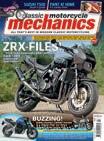
Monza circuit in Italy which should have favoured the Yamaha riders but it all went tragically wrong.

Following the triumphant first and third at the 1973 French GP, Yamaha went one better on the Salzburg track in Austria with Jarno and Hideo Kanaya taking the top two places – the OW19 was definitely making its mark! Things were looking well starred when Saarinen was side-lined by a broken drive chain and Kanaya found his crankshaft had snapped in two. Yamaha decided to boycott the next round of the championship at the Isle of Man TT because of safety concerns. In reality, this had little impact on the world ranking as most of the big names also chose to swerve the event for similar reasons. Next up was the
In the preceding race Jarno was hit when Renzo Passolini’s HarleyDavidson crashed into the trackside barriers. Both riders died, leaving the world of GP racing so much the poorer. Yamaha withdrew for the rest of the season as a mark of respect to their top rider.
Even to this day those that witnessed Jarno Saarinen on the OW19 believe he was Yamaha’s premier class winner in the making. The world of motorcycling was robbed of one of its greatest potential stars.
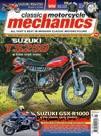


Despite pulling factory support, Yamaha knew it had to carry on if it wanted to take the premier title and it needed a new rider. Tensions within the MV Agusta team between No.1
Giacomo Agostini and No.2 Phil Read had been bubbling away for a while. The Italian Grand Master was also getting very frustrated with the lack of development at MV.
Rod Gould, 250 World Champion on a Yamaha in 1970, was employed by the European arm of the company in various rolls and brokered a deal that saw MV’s top man sign on the dotted line for the Japanese firm for the 1974 season. Agostini went immediately to Japan to try out the new OW20. Sometime in amongst all this, Yamaha had also signed up Tepi Lansivouri as No.1 rider to take over from his late fellow countryman Saarinen. Internal politics kicked off before the first race of the season with Finn suddenly finding himself playing second fiddle to Ago! The new bike differed significantly


from the OW19 in that it ran a monoshock rear end developed from the factory’s YZ250 motocross machine. Agostini was well regarded for his ability to set up and develop a bike and with the Japanese mechanics hanging on the multiple world champion’s every world the prototype OW20 was massively reworked. Moving the engine further forward in the frame put more weight on the front wheel and lengthening the swing arm improved stability. Further developments of the bike met with resistance from the team managers but such was Agostini’s analytical ability that he soon convinced even the most sceptical senior people at Yamaha he knew exactly what was needed to fine tune the bike.
If Yamaha, Agostini and Lansivouri were hoping for a fairytale debut they
were all to be sorely disappointed. The Italian experienced gearbox bearing failure, ran out of fuel and was continually hounded by the MV Agustas he’d walked away from, only taking two wins over the entire season. The Finn took a fair time to acclimatise to the OW and only managed one win.
Yamaha was still on a learning curve; the OW20 was only the one iterative step beyond the OW19 and still not a potential world beater.


Here's an amazing shot from 1964, with a young Giacomo Agostini showing us how its done on his 250cc Moto Morini. Finishing up 12th at the end of the season, Ago then jumped ship to MV Agusta – and that’s when he started to get some serious success, taking second place in both the 350cc and 500cc championships in 1965. For more incredible images just like this, check out the Mortons Archive at www.mortonsarchive.com
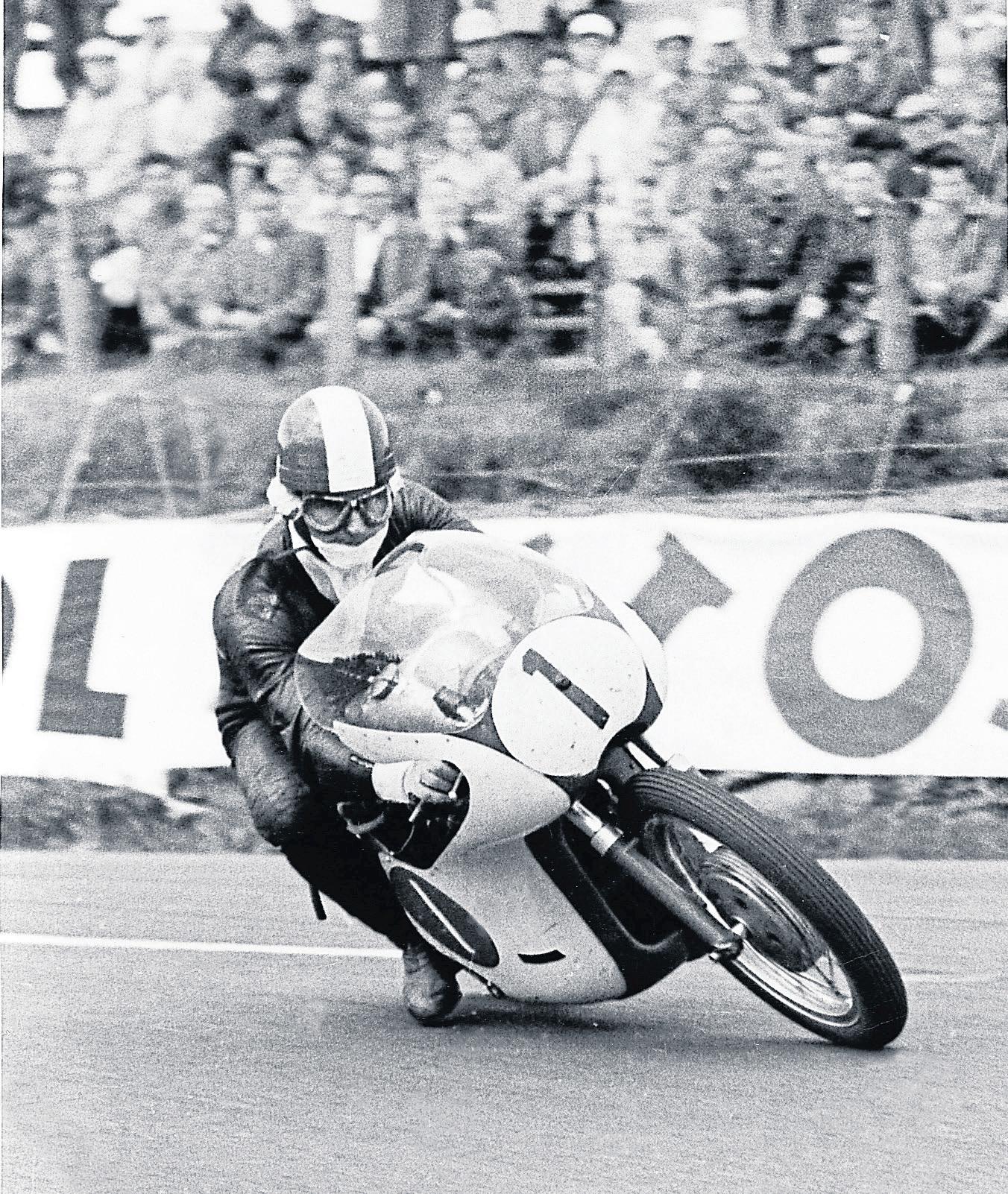
Just in case you hadn’t got our subtle visual hint, spring is just around the corner... so with the ‘new motorcycle season’ almost upon us, now is the ideal time to think about preparing your bike.











We’ve put together some top picks of businesses whose friendly experts will help you with more smiles in your miles!








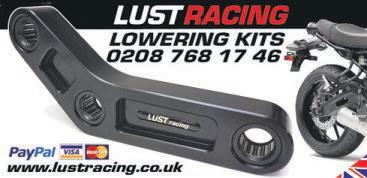




















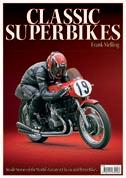












AMBASSADOR MOPED 50cc, 1962, believed to be one of only 4 known to exist from a build of 200, good condition, V5, on Sorn, £1100 Tel. 07790 603367. Worcs.
ARIEL Square Four 1950, recommissioned 11 years ago and used every year, very nice useable classic and becoming a nice collector piece, £15,000. Tel. 07801 502033.

extender, hugger, Remus can, crash bungs, centre stand, heated grips, 2 keys, garaged, 2 owners, MoT due 30/05/23, Ventura luggage negotiable, £3450 Tel. 07703 619748.
HONDA CB250 Nighthawk, N reg, 1996, 58,000 miles, MoT till November 2023, used regular for last 10 years back and forwards to work, reliable and economical, low seat high, comes with rack, £750 Tel. 07857 211146.
HONDA VFR1200FD 2014, metallic red, 29,000 miles, service history, MoT, new: brakes and fork seals, £4999, optional matching top-box and Givi-rack. BMW K1200, 2000 metallic blue/silver, 19,000 miles, service history, MoT, new: brakes and tyres etc, £2999 including tool kit & h/panniers x 2 Tel. 07759 607498. East Berks.
HONDA CB125 GLR 2015, blue, MoTOctober,only750miles,very good condition, £1650 ono. Tel. 01449 257745. Suffolk. Email. trevoransell@tiscali.co.uk
MOTO GUZZI V50 MK11, 1979, historic tax, 44,100 miles, heated grip, rebuilt engine, new rings etc, regular visitor Spain, Moto piston and Columbus rallies, handbook, Workshop Manual, various spares extra, £1650 Tel. Keith 07905 796557. Northants.
DUCATI Multistrada, 2003, 1000cc frame with V5, £450. Plus lots of other spares for sale: Ducati 900SS, 2004, forks, £100. Ducati ST2 various spares for sale. Ducati Monster 600 engine for sale, £345 plus other parts. Garage clear out of lots of Ducati spares Tel. 07930 473221.
Staffs. Emaill. thinktank1150@ gmail.com
KAWASAKI Verseys 1000, 2016, front and rear sprockets, 16 tooth, 42 tooth, as new, only used for 300 miles, £25 Tel. 01502 568828. Suffolk.
TRANSALP 700 mirrors original chrome, £25 pair. Original standard screen, £20. Touring screen MRA X screen, tinted, £40. Haynes Manual, £10 plus p&p Tel. 07786 101211.
TRIUMPH THUNDERBIRD 900, chrome sprocket cover, new in box, all original packaging, £400 + £7 postage fits Legend
Adventurer Sport also rear brake cylinder plate, black, mint, £40 + £5 postage. Thunderbird 900 black plastic O.E. clock covers, £75 + £5 postage, all mint Tel. 07434 513161. Lancashire.
BOOKS: Aprilia by Walker, 1990, Ariel Post War Models, Bacon. Gold Wing Portfolio, 1975-1995, Brooklands Books. Yamaha Legend, by Macauley, £10 each Tel. 07974 822880. West Midlands.
FRANK THOMAS DEFENDER
ARIEL HUNTMASTER 1958, concours condition, following extensive refurb, matching number, old buff logbook, original restoration, V5C, 51,000 miles, 12V electrics, photos available, ready to ride, free delivery arranged, £6450 Tel. 01723 372219. North Yorkshire.
GREEVES Sports Twin Roadster, 250cc, V5C, Moorland blue, alloy mudguards, paddle hubs, new tyres, correct seat, good tidy useable British lightweight, ‘The Choice of The Expert’ excellent condition, £4000 Tel. Alan 01268 735135. Essex.
HONDA REBEL 1997, 250cc, Cruiser, 11,000 miles, MoT April 2023, very nice motorcycle Tel. 07439 53920.


BMW F800GT 2014, new Metzler 01 Roadtec tyres, major service done, touring screen, top box, heated grips, ABS, USB ports, 2 keys, service history, MoT April 2023, 67,000 miles, BMW battery charger, £3650 Tel. 07913 484929.
HONDA BROS 1985, 400cc, all MoT’s, 14,000kms, run every month, hardly used, getting a bit heavy now, need a 125 Honda or Yammy, as new, £1750 ovno Tel. 01515 310111. Merseyside.
HONDA CBR600 Streetfighter, excellent condition, currently Sorn, £975. Honda seat for SS50 or small Honda, £25 Tel. 07510 674950. West Midlands.
HONDA HORNET 600cc, 1998, very good condition, Sorn, new tyres, battery brakes, fork seals, £1600. Tel. 01432 265726.
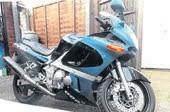


KAWASAKI ZX6R600 Ninja, Termignoni titanium rear sports exhaust, Dunlop Sportmax rear tyre, new Michelin Pilot Sport front tyre, recent clutch, spark plugs, air filter, oil and K&N oil filter, needs some bodywork attention and chain and sprockets, good engine, very fast bike, no leaks, been used daily until recently garaged, starts first time and rides without fault, new bike forces reluctant sale, no MoT, have lost the V5, hence price, open to offers £850 Tel. 07398 891924.
HONDA DN-01 (NSA700-A8) black, 2011 bike, currently just 2390 miles, new MoT, new tyres, two keys, two previous keepers, £4850. Tel. Simon 07541 083977. Surrey.
KAWASAKI ZZR600E1 1993, turquoise and black, very good condition all round, black powder coated wheels, stainless front brake pistons, MoT until October 2023, (most previous MoT’s, lots of history) just 24,000 miles, Owners Manual and Haynes Manual, original toolkit, 30 years old, £1695 Tel. Simon 07541 083977. Heathrow area.
KAWASAKI KLR650 Tengai, 1989, complete rebuild from the ground up, full engine rebuild new paint, very nice usable classic, £3250. Tel. 07801 502033.

KYMCO XCITING 2021, 71 reg in blue, new scooter forces sale, fsh, no winter use, 400cc, Maxi scooter, showroom condition, garaged, warranty to Nov 2023, 74 mpg, £3999 ovno Tel. 07784 499299. South Yorkshire.
MOULTON STANDARD BICYCLE 1960 maroon, 16” wheels, 3-speed Sturmey Archer, hub gears, all complete rideable or restoration, dry stored, £70 Tel. 01299 266565. Worcs.
SUZUKI BURGMAN 2015, 400cc, dark grey, fsh, recent tyres, belt and rollers done at 16,000 miles, nice condition, long MoT, one owner no winter use, Givi box included, £2750. Tel. 07784 499299. South Yorkshire.
SUZUKI V-STROM 2018, 250cc, baby V-Strom, 3000 miles, extras, centre stand, heated grips, handguards, almost as new condition, no issue, sale due to lack of use, 12V electric start Tel. 01745 822287. North Wales.
NOS TYRES 2 of 2.75x19 Mitas, £40 each. 1 of Battlex BT45F 100/90-18mc 56V, £50. MRA
VNB-KBA 37960 screen 17 1/2 high x 16 1/2 width, good condition, all fittings, £45. Norton Dominator inner + outer gearbox cases, clutch parts, £65 Tel. Keith 07905 796557. Northants.
PANNIERS: large leather throw over panniers, just like new, no scuffs or scrapes, will fit just about any bike, all black with chrome fastener, no tassels or studs, £45 Tel. 07988 149448. Lancashire.
ROYAL ENFIELD 650cc

YAMAHA XSR125 2022 reg, yellow, 125cc, 350 miles, mature owner, full Yamaha race kit, top box, more pictures on request, £4250 Tel. 07772 797112.
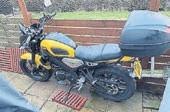
APRILIA 650cc, Pegaso engine for sale, Rotax engine from 97/98 bike, complete with cases, stator starter motor and twin carbs, £490. Tel. Simon 07541 083977. Heathrow area.
Interceptor/Continental parts for sale: Alloy sumpguard, £40. 1 pair of Halcyon handlebar mirrors, £40. DNA filter + plate, £50. Booster plug, £50. Engine guard, £40. Oil filler cap, £15. 1 pair of handlebar risers, £30. Givi 33 litre topbox including fix plate, £30 all plus p&p Tel. Bill 07713 160796.
SPARES FOR Honda CL/ CB250/350K 1968-74 spares for Kawasaki W650/W800 Tel. 01291 423392. South Wales.
SUZUKI GT185 gearbox and lower crankcase, GT185 gearbox, clutch, crankshaft and oil pump in lower crankcase, drive sprocket has been welded to output shaft, collect only, £100. Tel. 07984 056636.
Wanted
SUZUKI Burgman, 200cc, scooter must be low mileage and excellent condition, top price paid for the right bike Tel. 07778 742954. Staffs.
SUZUKI PE 1973 to 1970, any parts or full bike for restoration Tel. 07919 064123. Lancashire.



WANTED FOLDING aluminium bike ramp, one that will bolt onto rear internal of my van, preferred size I.R.O. 2400 L, 1000 W, my location Larcs, 35 miles west of Glasgow can collect. Tel. 01789 750863. Scotland.
WANTED SUZUKI RV125 4 stroke version, any condition Tel. 01291 423392. South Wales.
Miscellaneous
ABBA BIKE STAND with fixing kits for Kawasaki ZXR750 and ZX-6R Ninja, (fixing kits for other bikes available for Abba), little used, £50. Tel. 01516 069983.
APRILIA THE COMPLETE
STORY 2000, Mick Walker.
Ariel Post War Models, Bacon. The Yamaha Legend 1979, Macauley. Honda Goldwing Portfolia, £10 each Tel. 07974 822880. West Midlands.
black leather jacket, built-in armour, twin zips for adjustment, top quality, years old, like new 40”/102 chest. Magazine picture available, £100 plus post. 30” waist leather jeans and denim/ Kevlar jeans also Tel. 01282 816306. Lancs.
GRIFF JENKINS STORY by Mortimer Senior MCN Annual 1975, Honda CB250N Haynes Manual, Honda NC30 Manual Haynes, Its a Triumph, Ivor Davies, £5 each Tel. 07974 822880. West Midlands.
HELMETS bargains Caberg Justissimo GT white, large, brand new, £55. Noland N87, white, large, brand new, £55 Tel. 01513 349674. Wirral. KAWASAKI JACKET TT leathers in green and white to match bike, with Kawasaki ‘K’ on the shoulders, size 42”, not scuffed or been down, shoulder and elbow armouring, £80 Tel. 01516 069983. Wirral. MOTORCYCLE MAGAZINES: RideBike,MotorcycleMechanics, Classic Bike Guide, Real Classic, Fast Bike, Superbike, Classic Bike, Triumph Torque mags, Triumph brochures, free on collection, split if required Tel. 01282 816306. Lancs. ONE PAIR Hepco & Becker panniers with frame/locks/ keys, excellent condition, £200 ono. One large Givi top box with base plate, excellent condition £70 ono Tel. 07913 032864. Yorkshire. Email. moorend4@ hotmail.com

